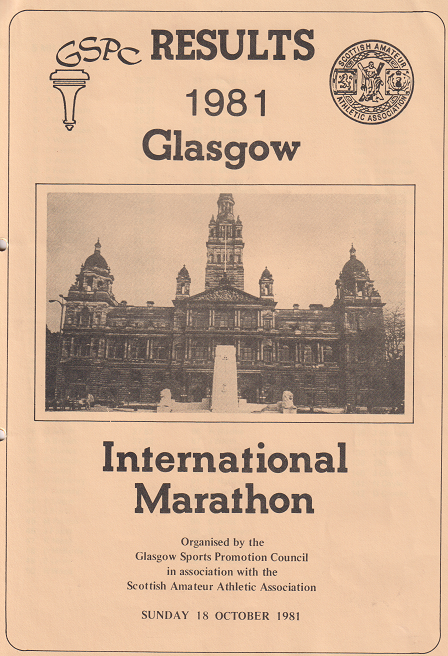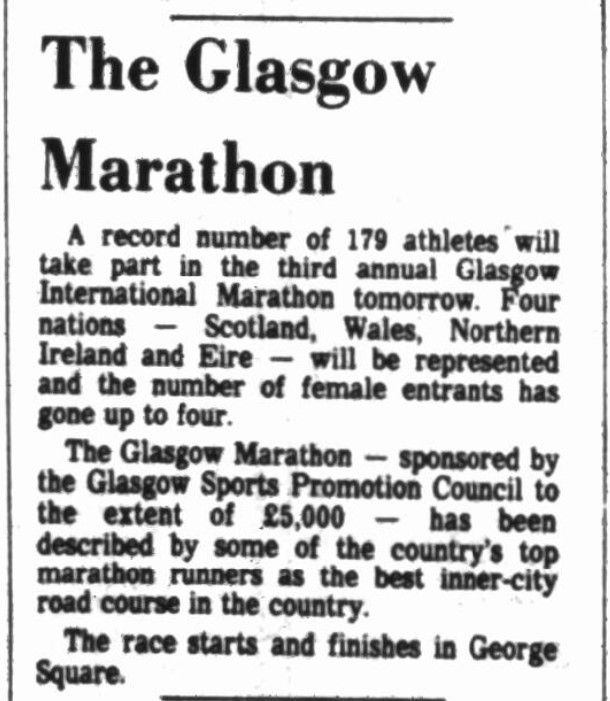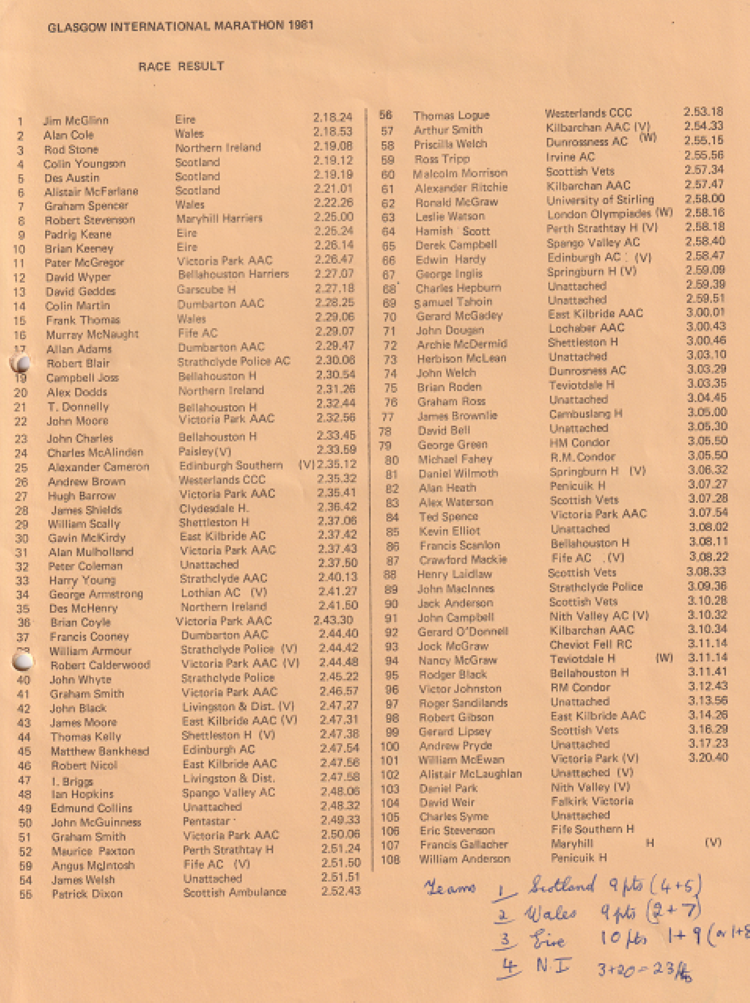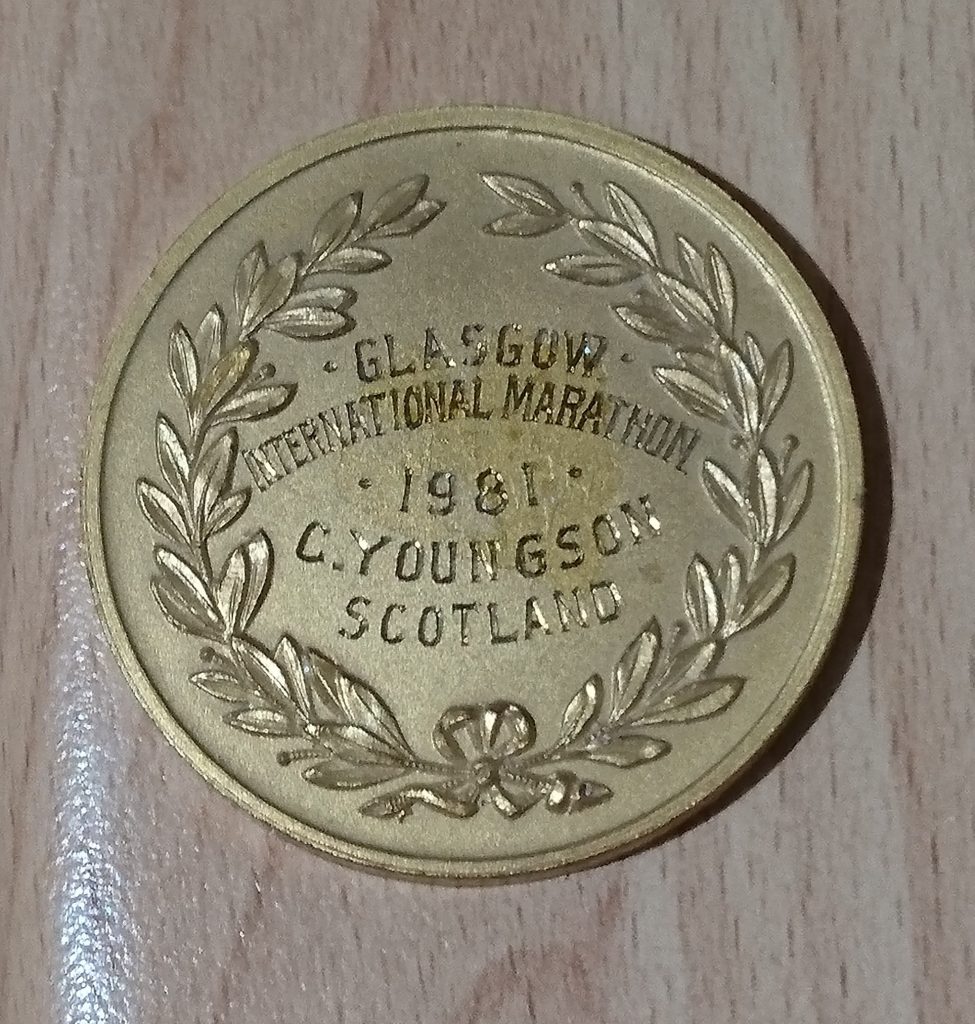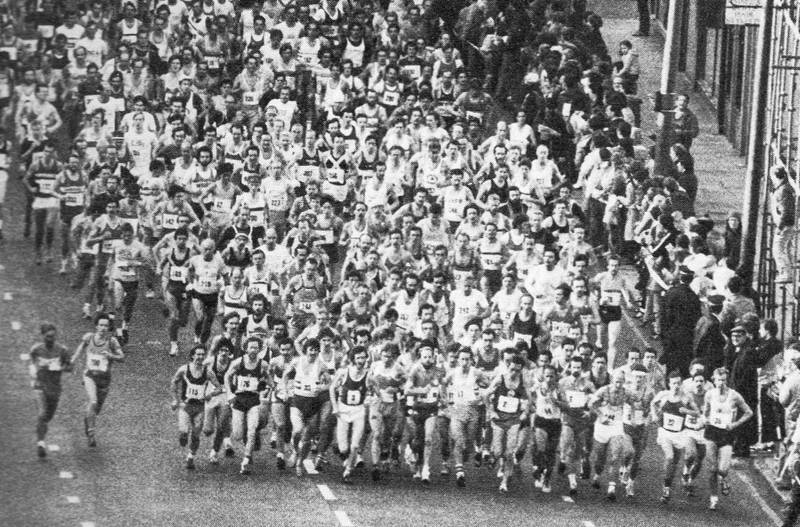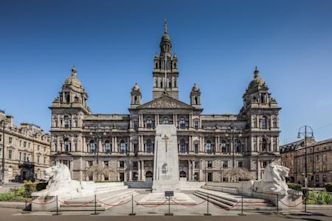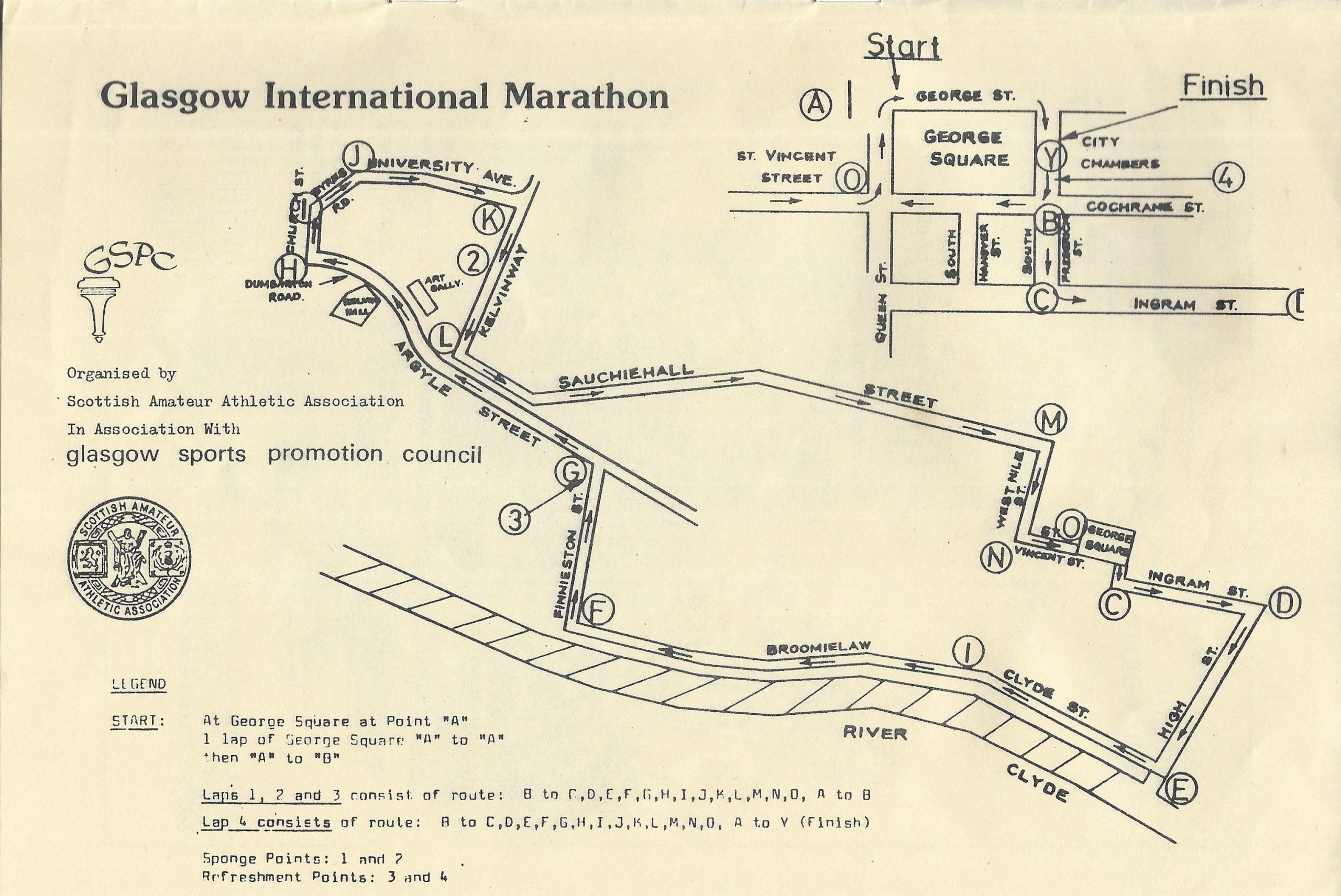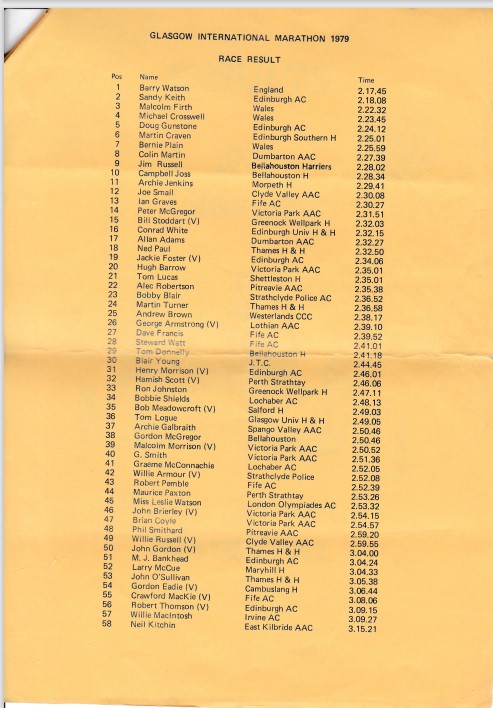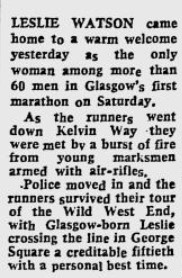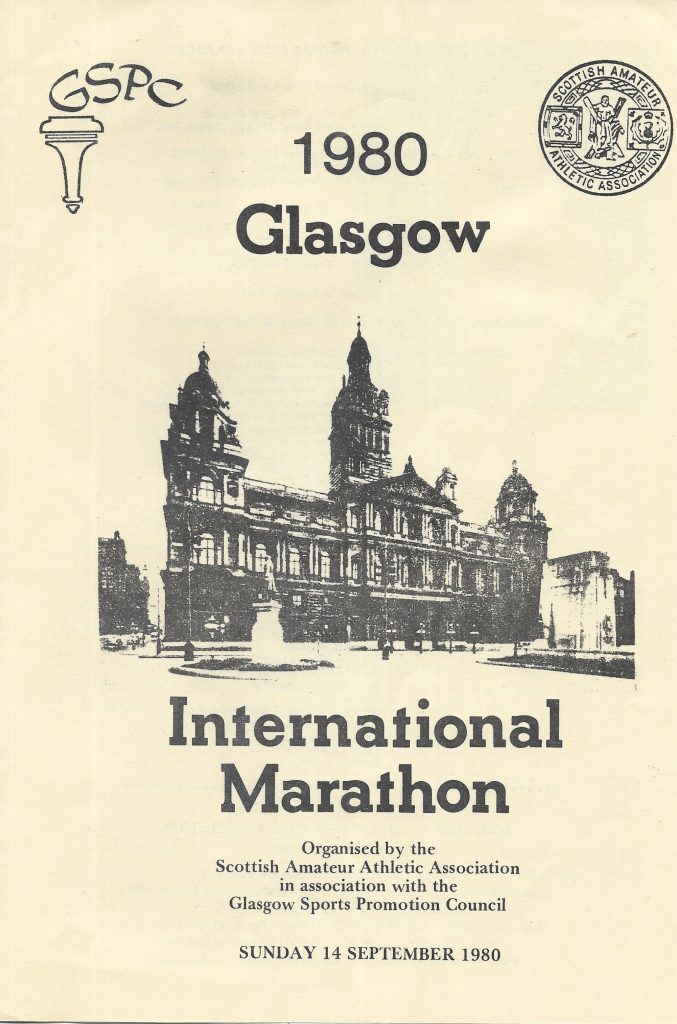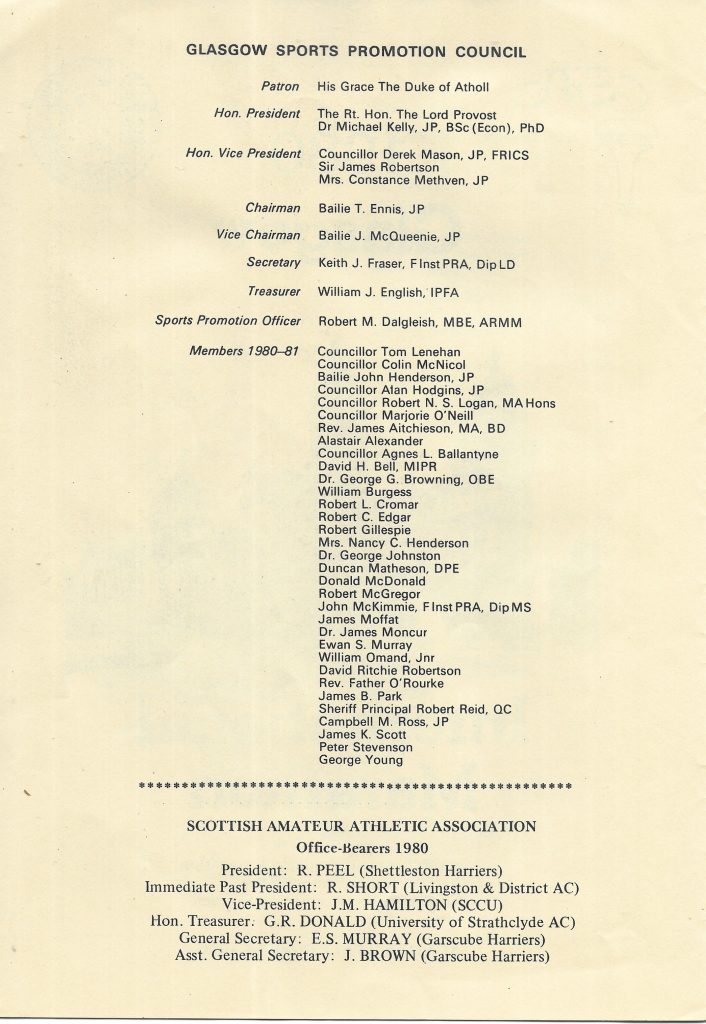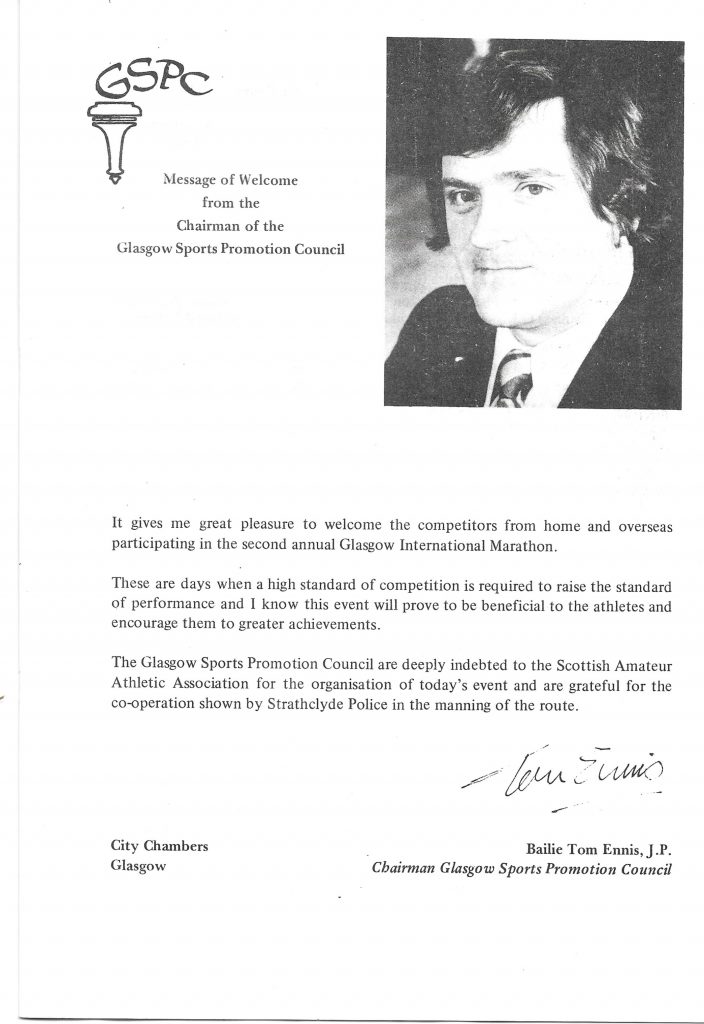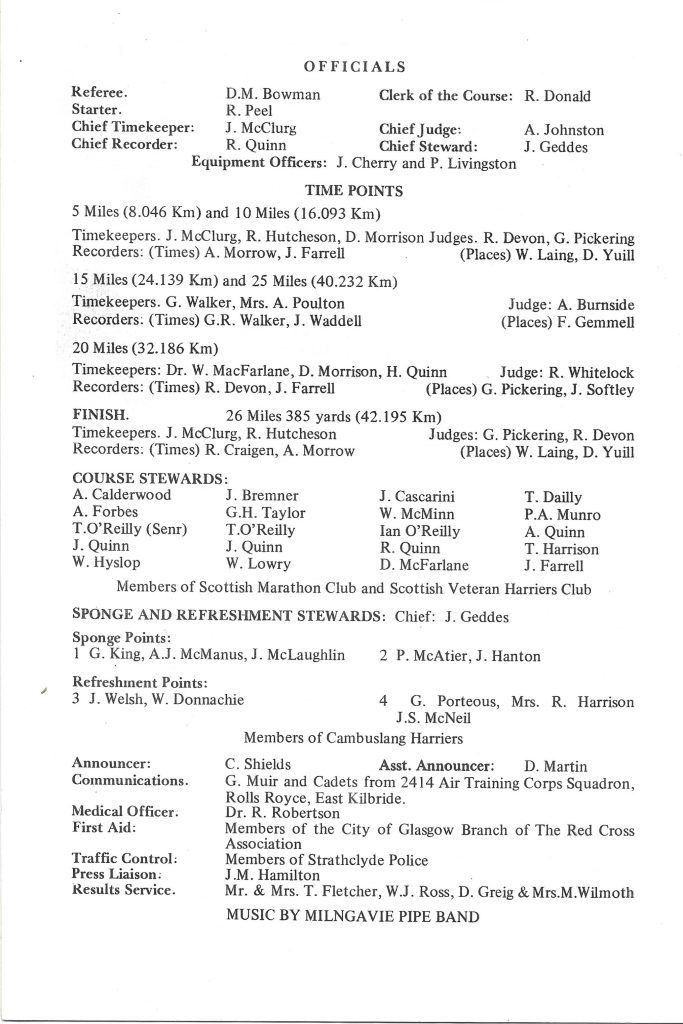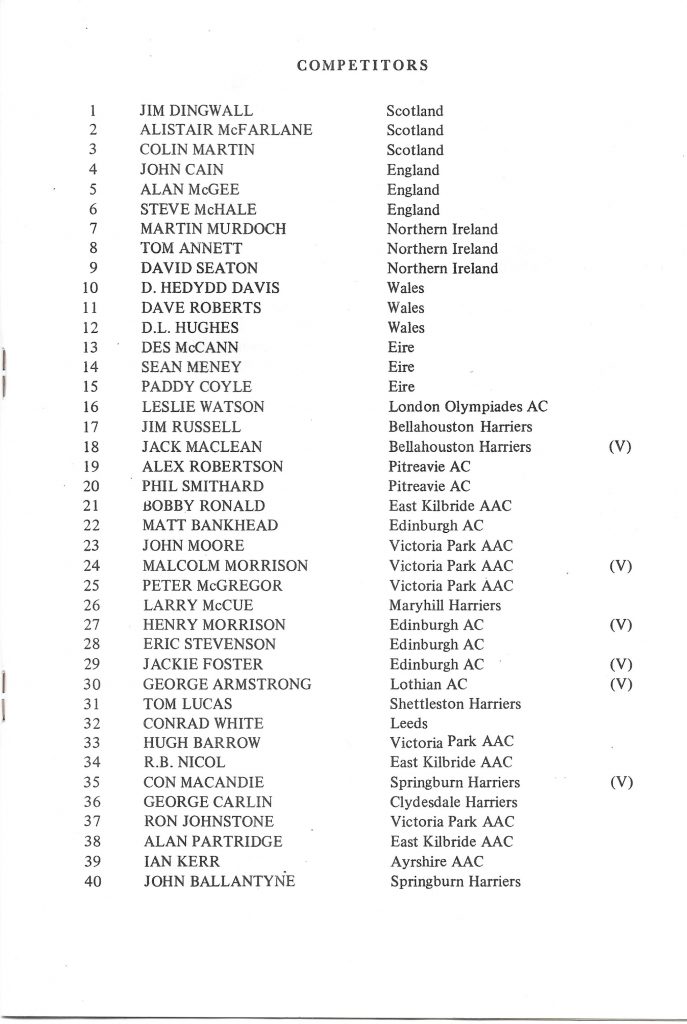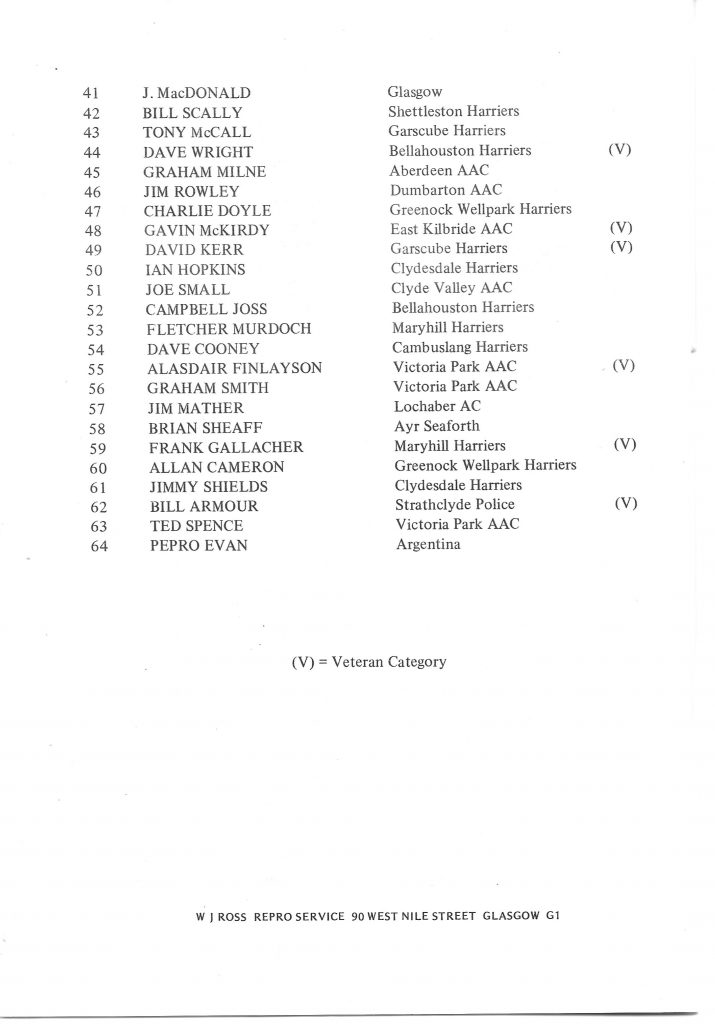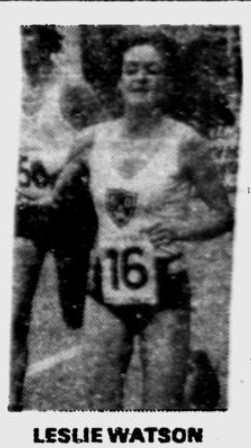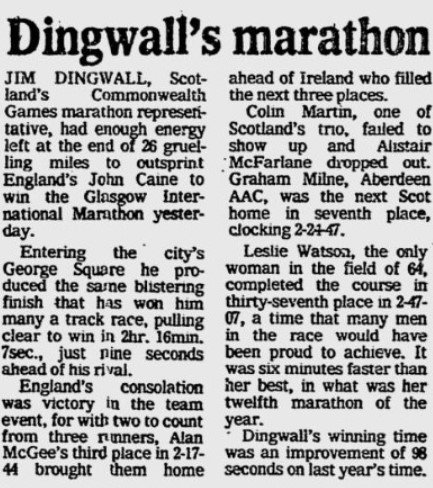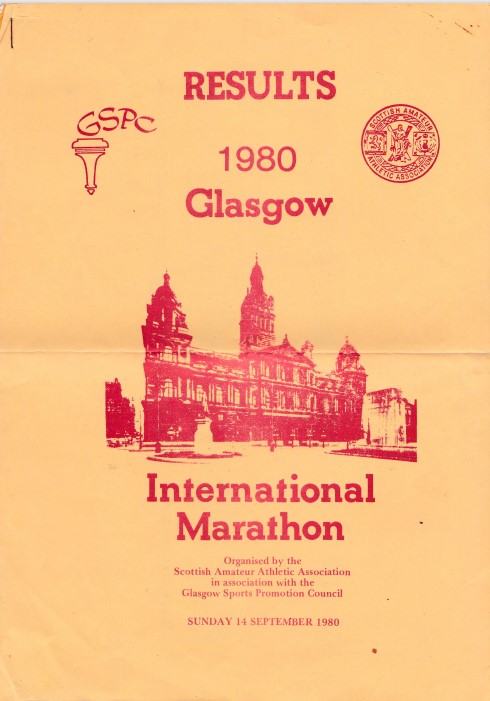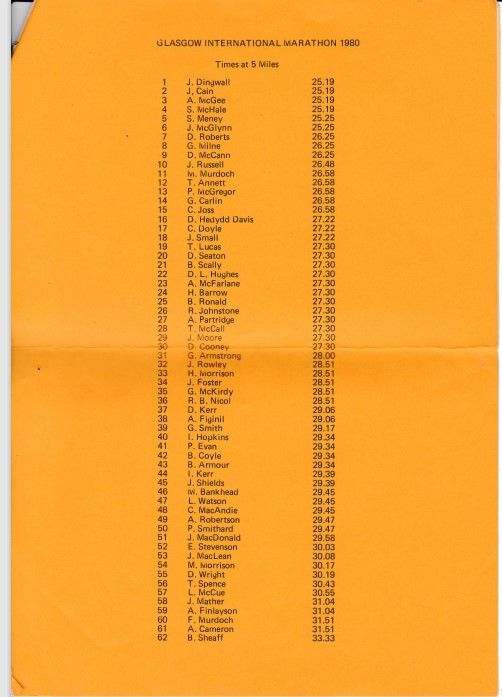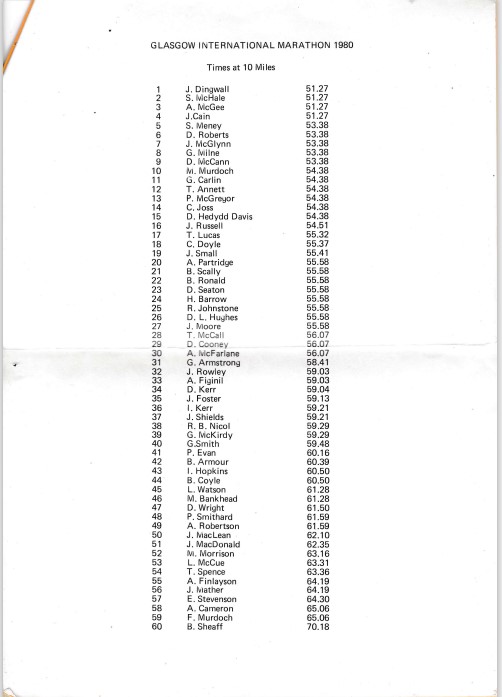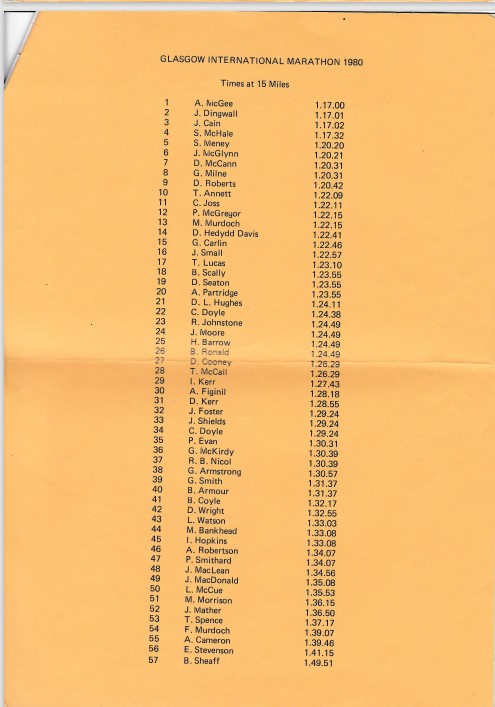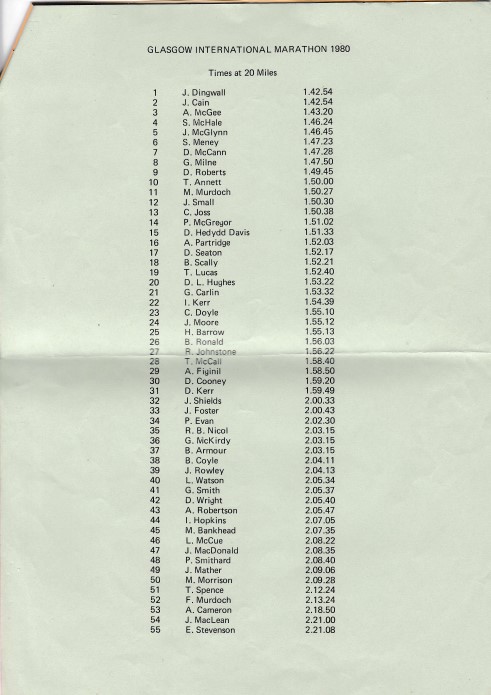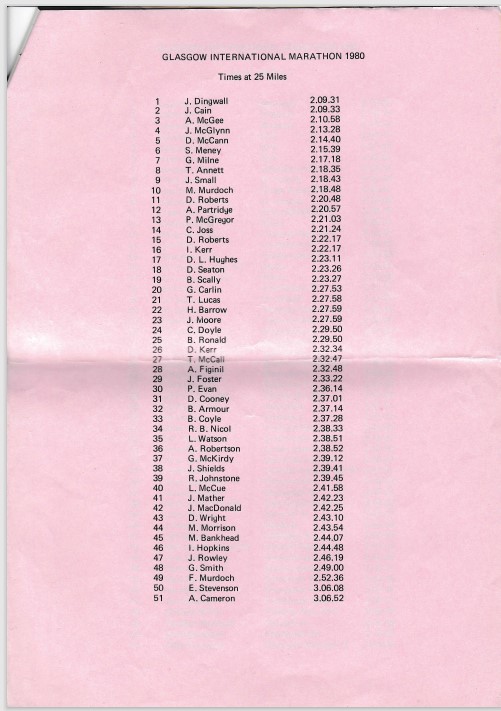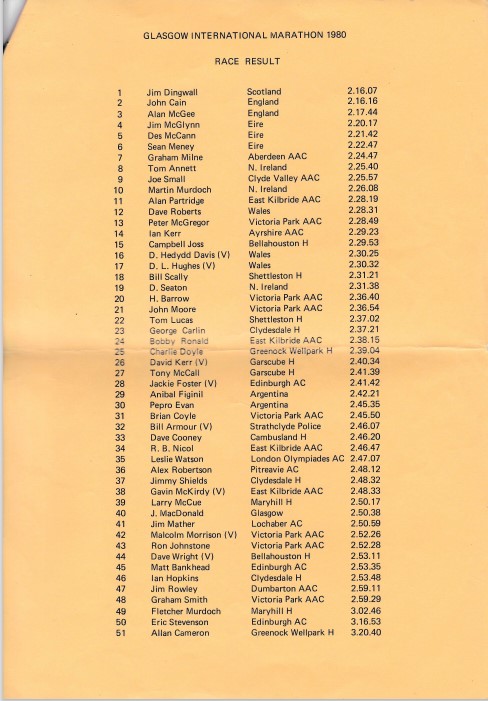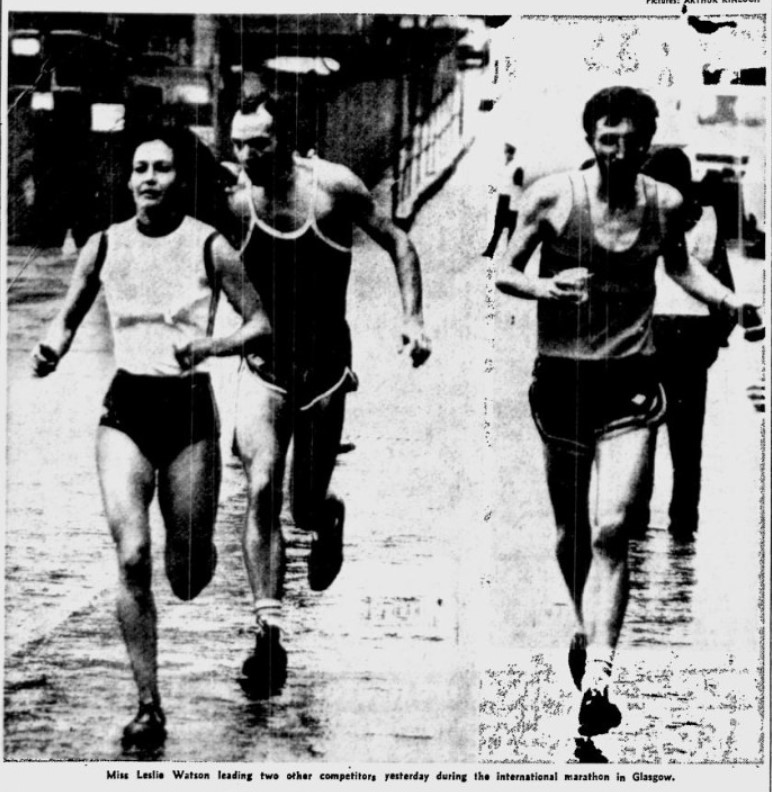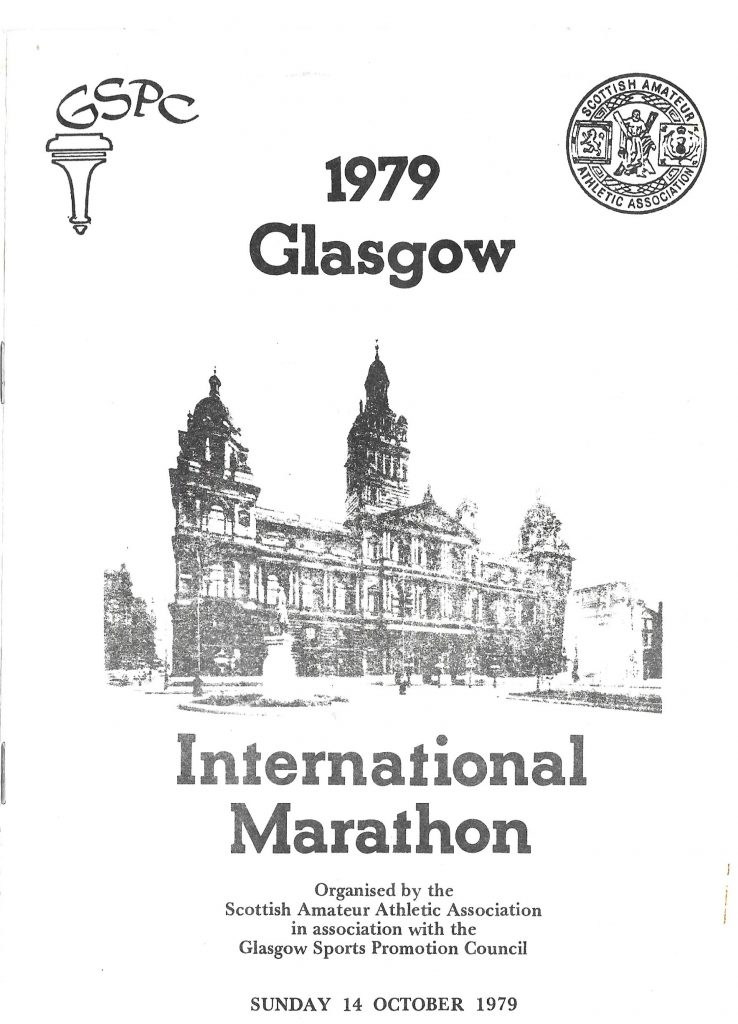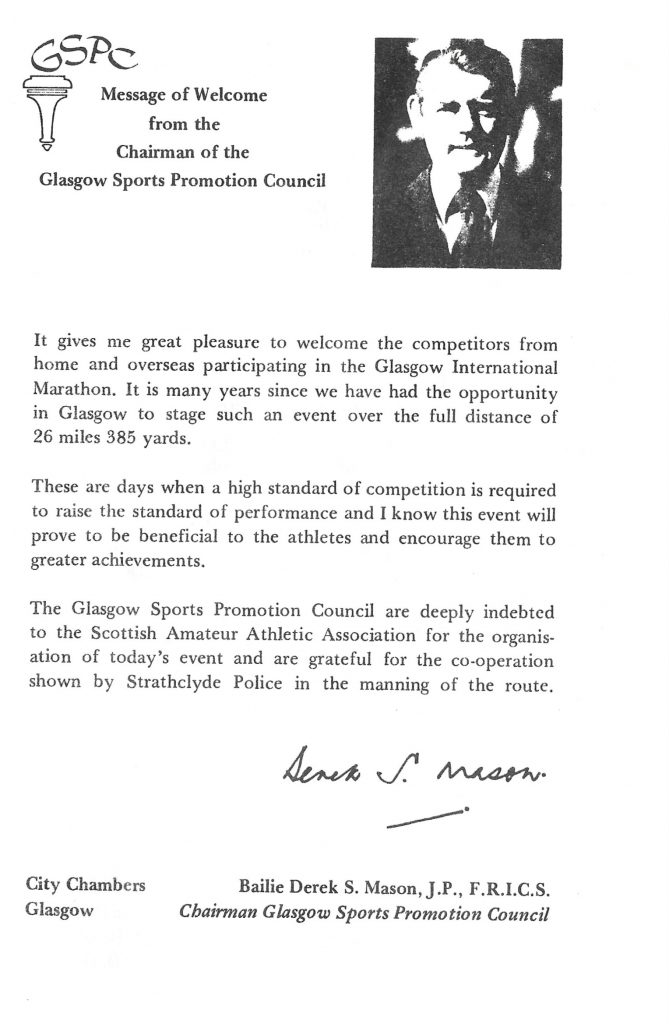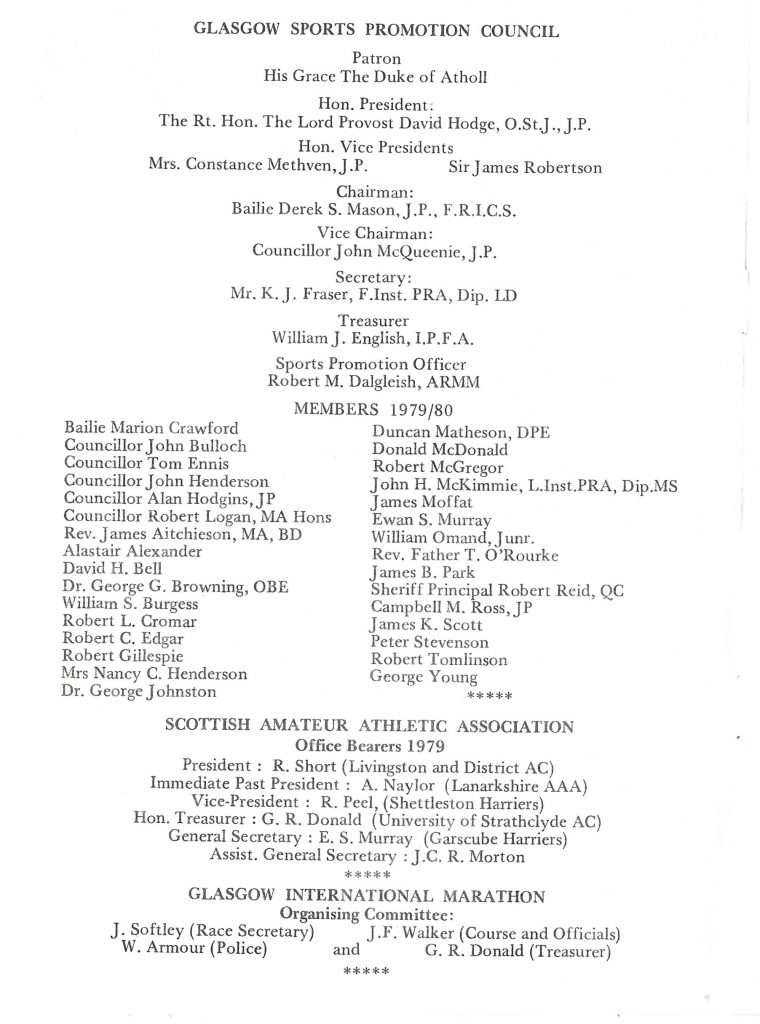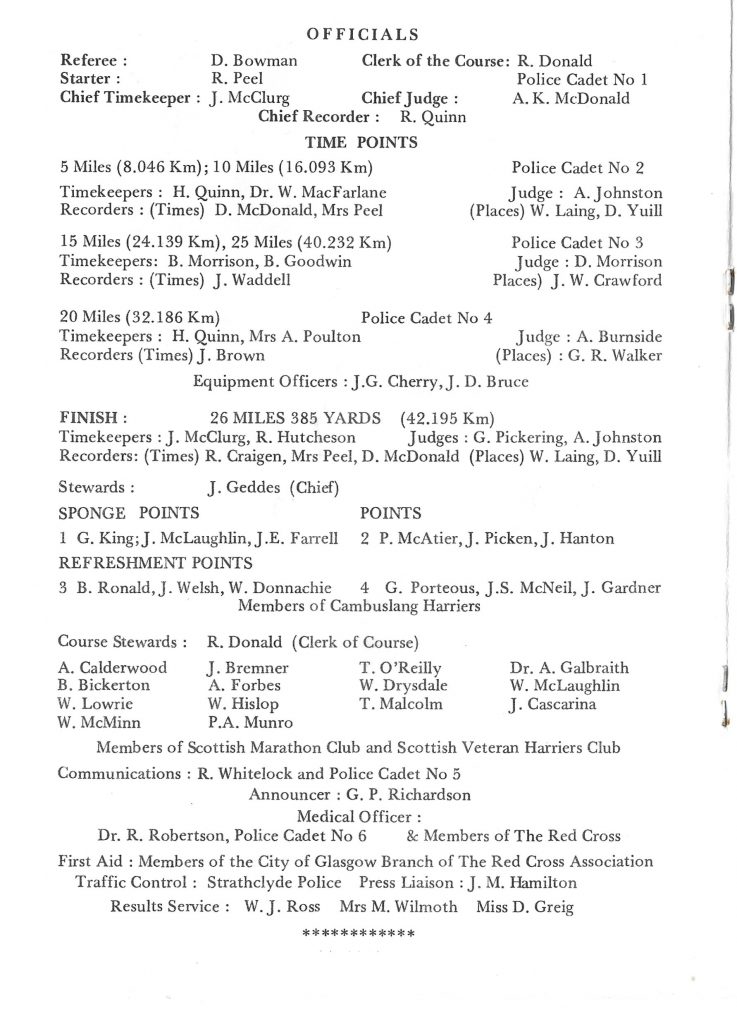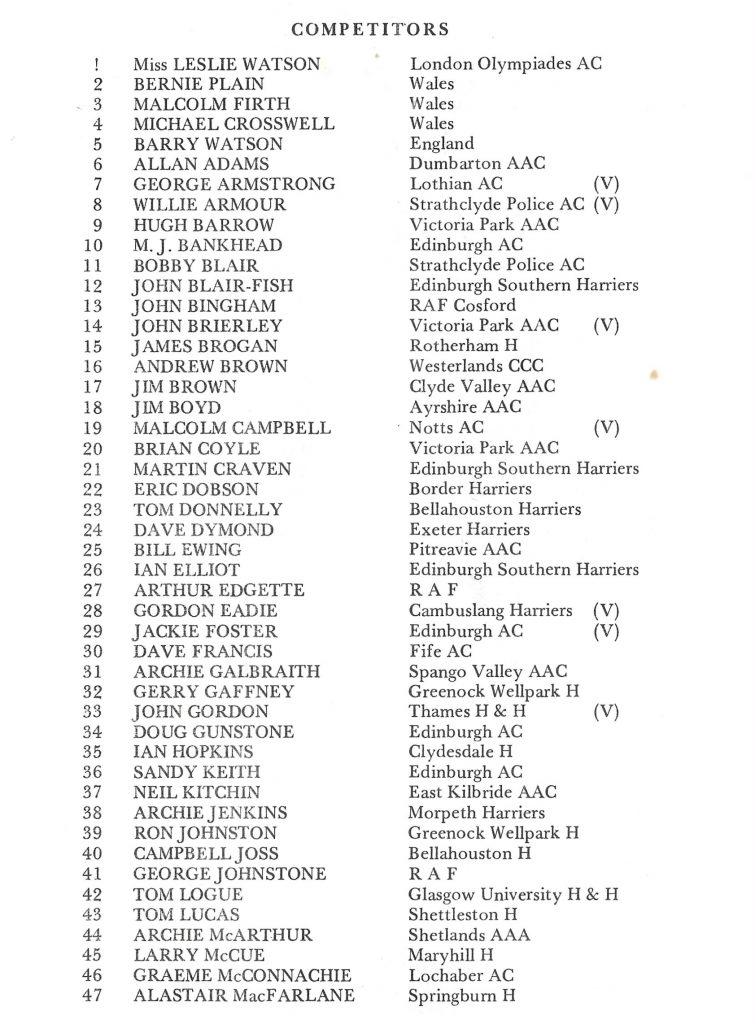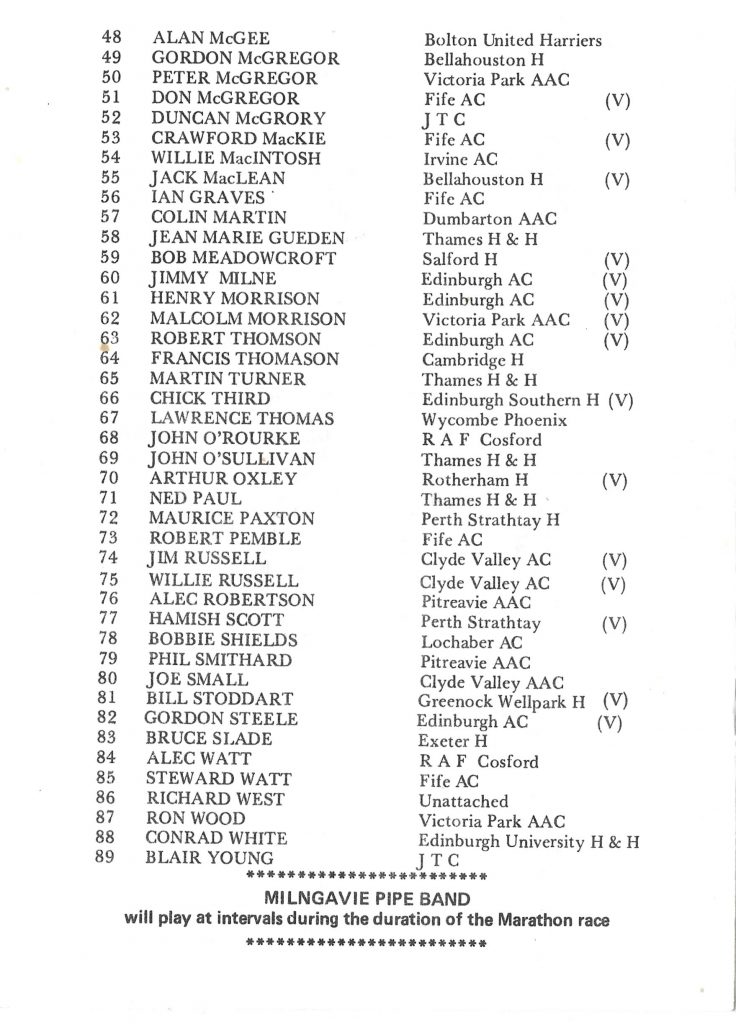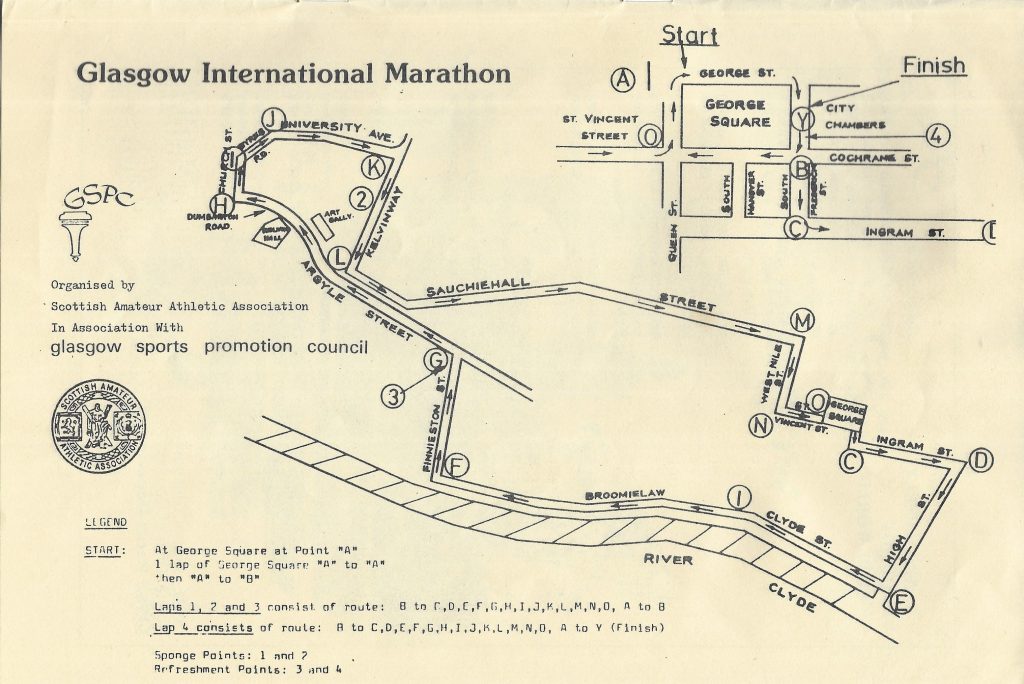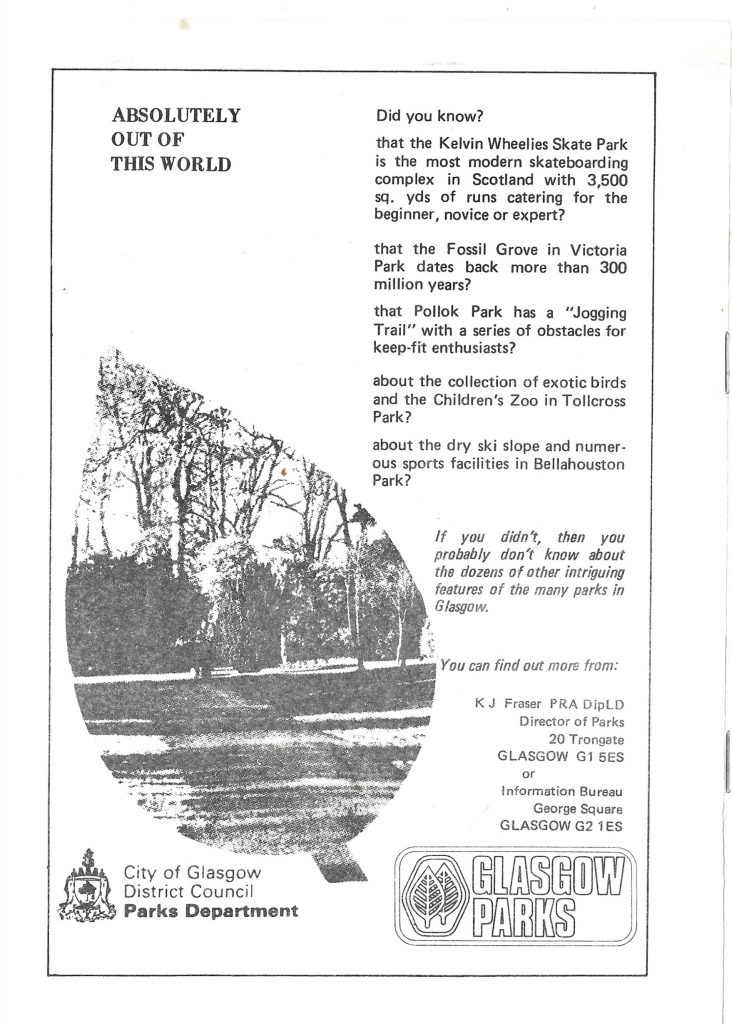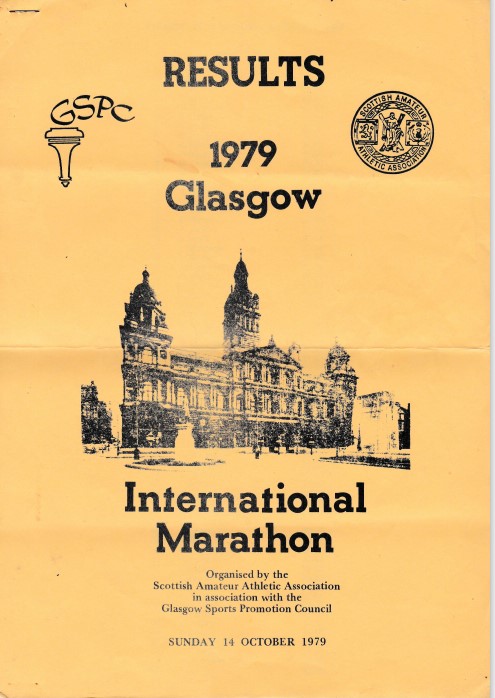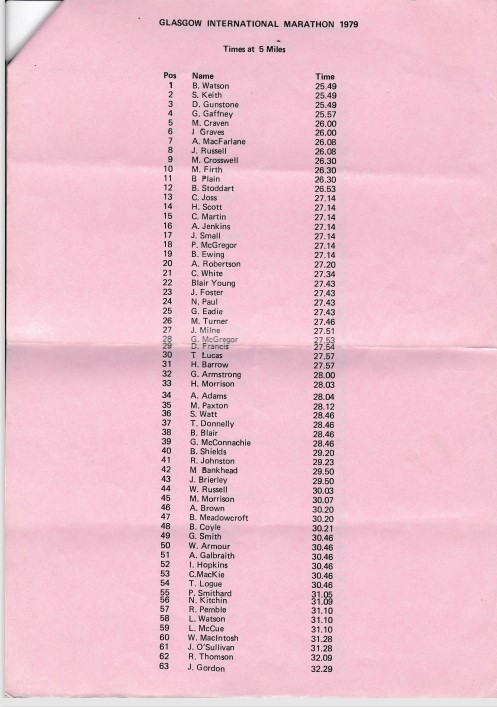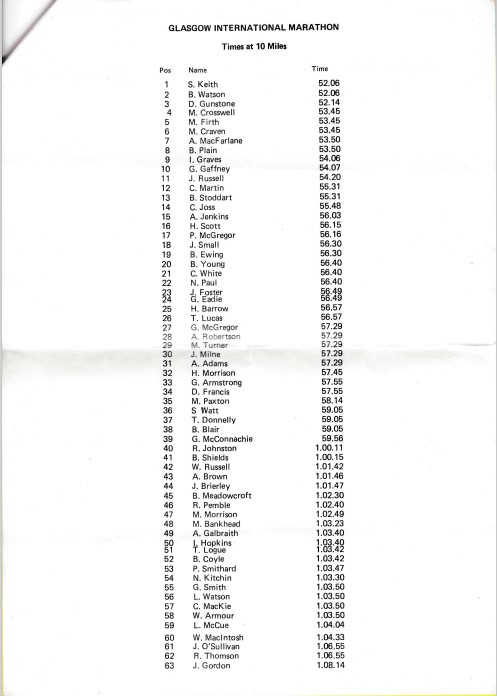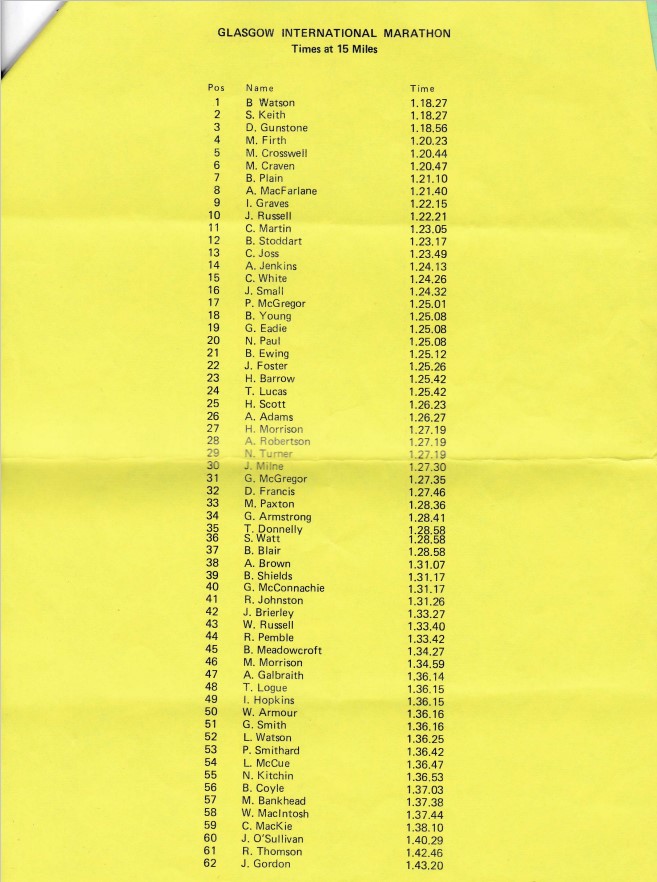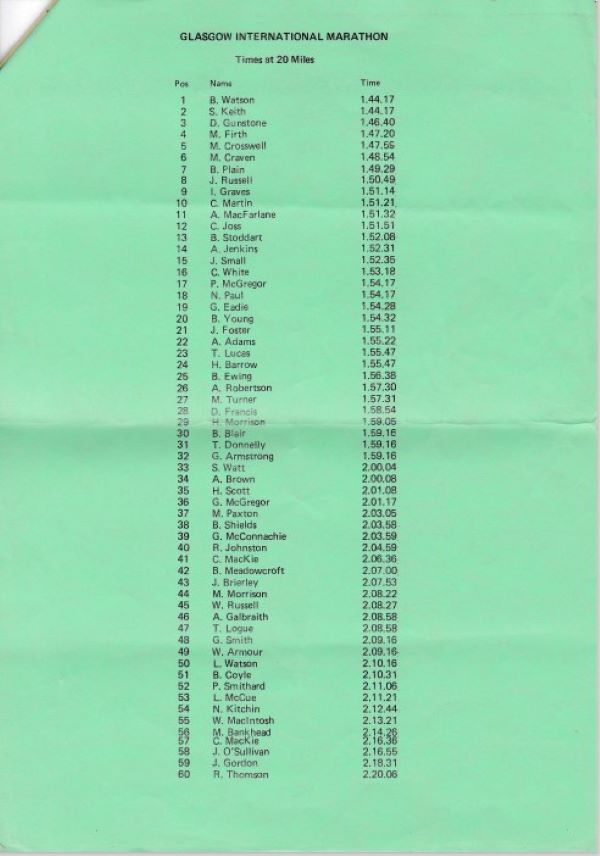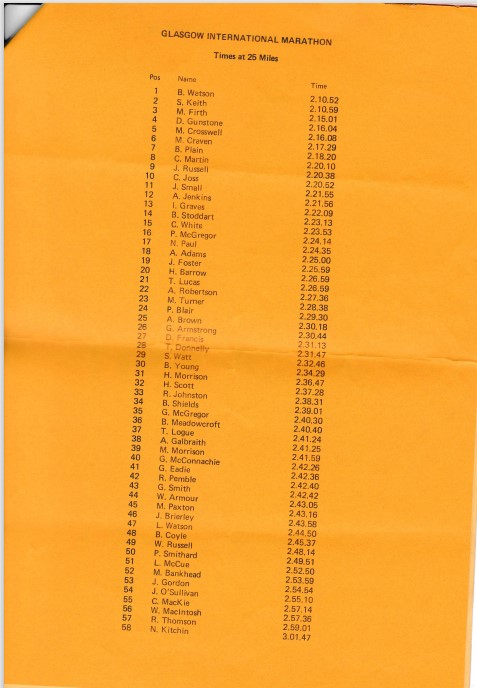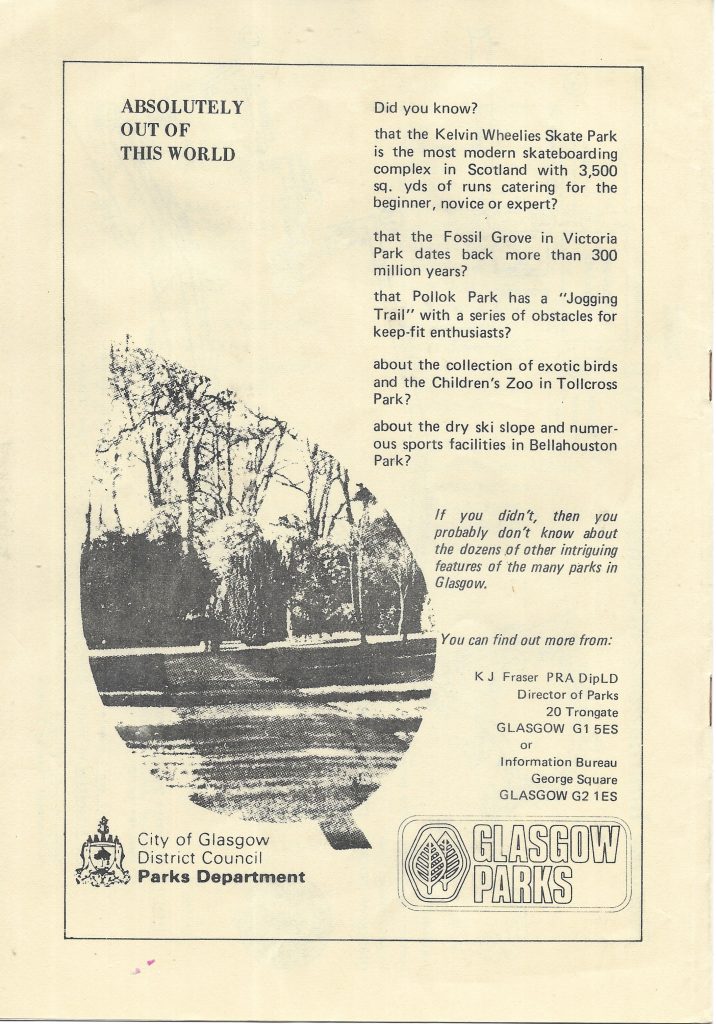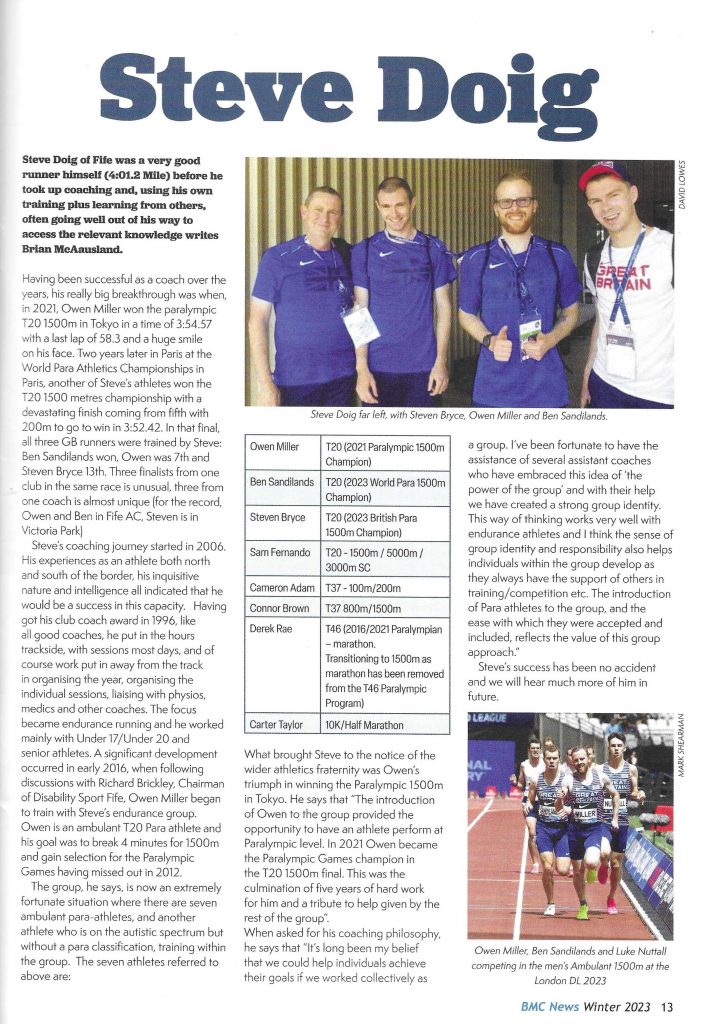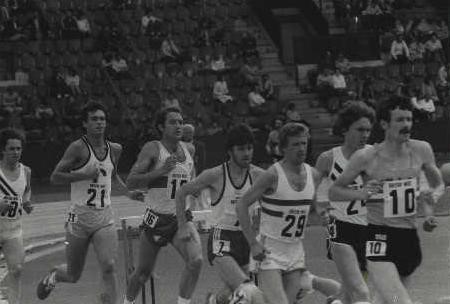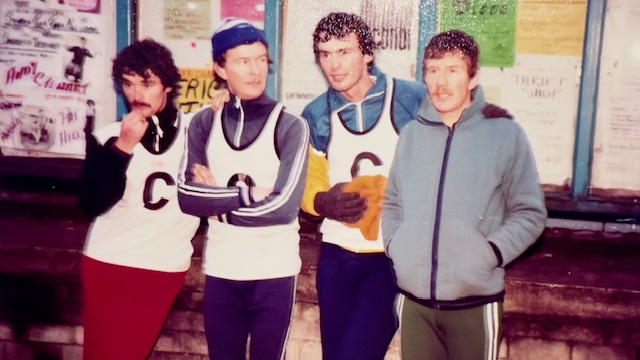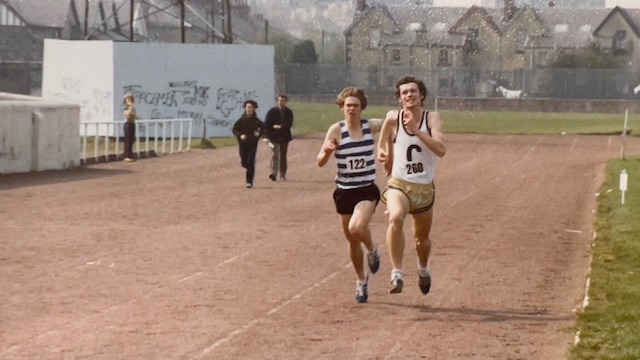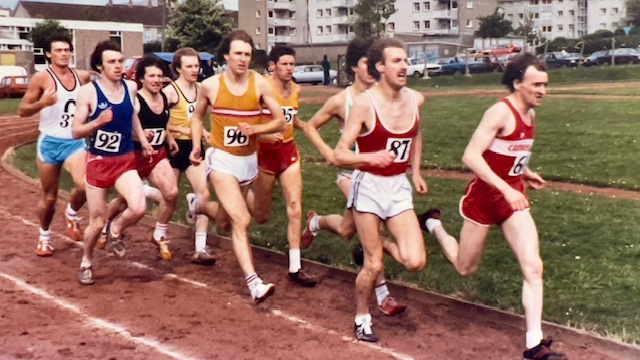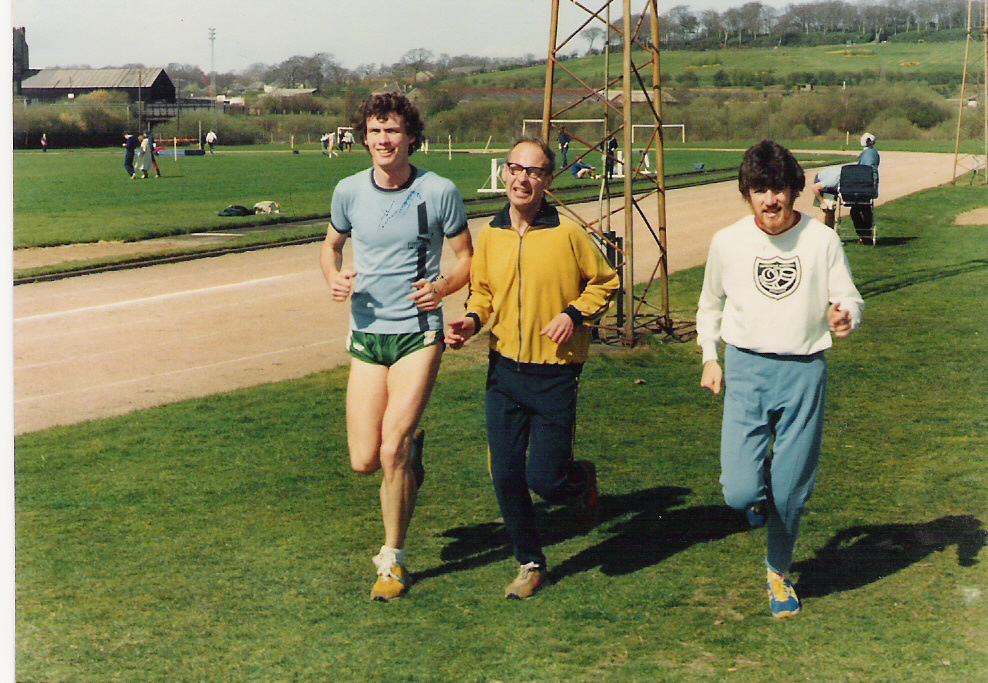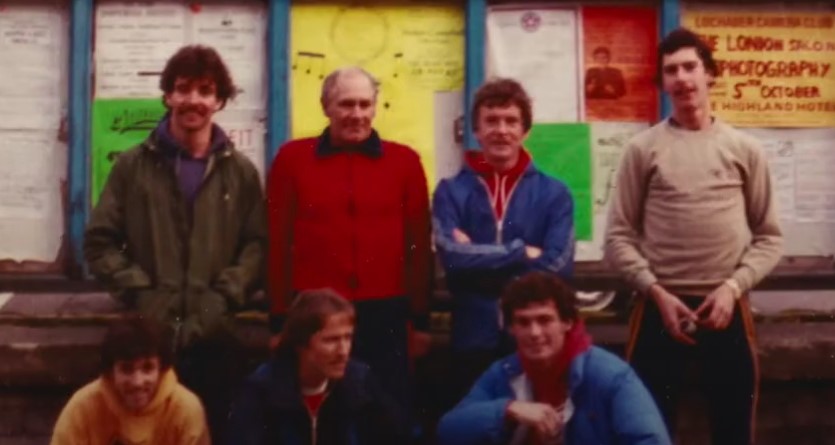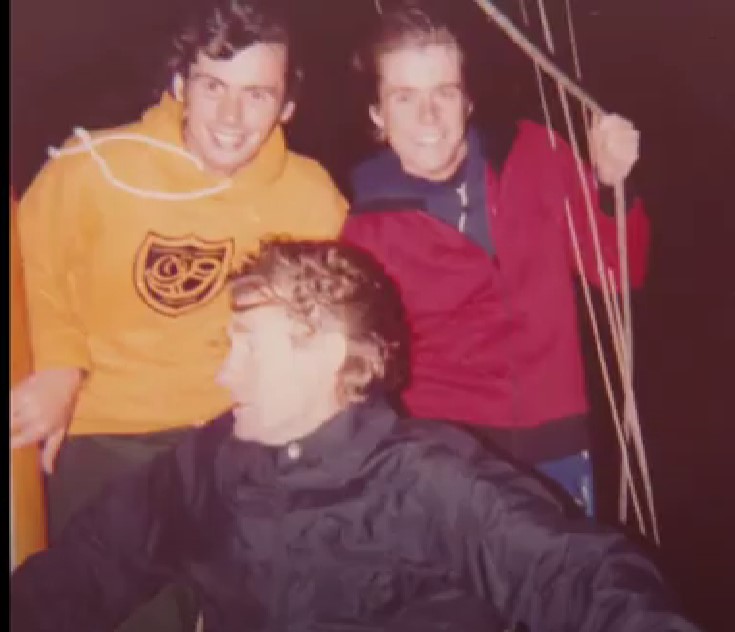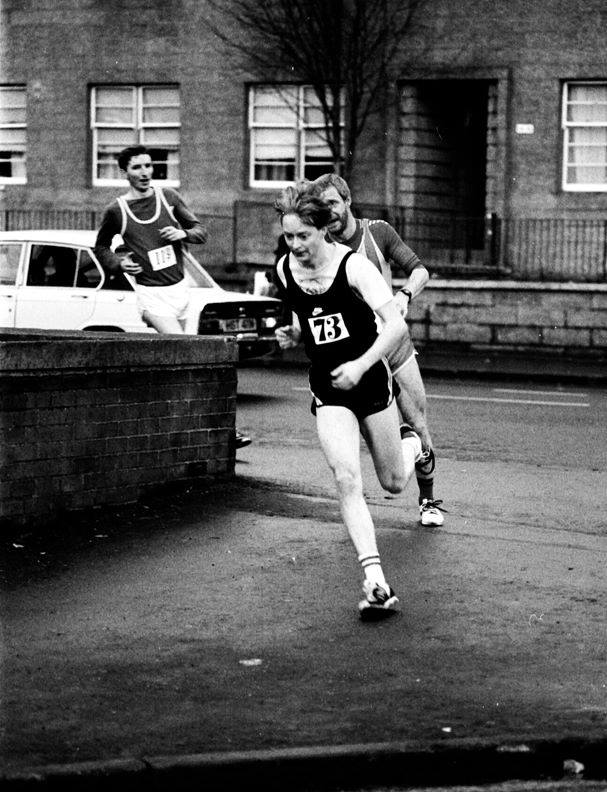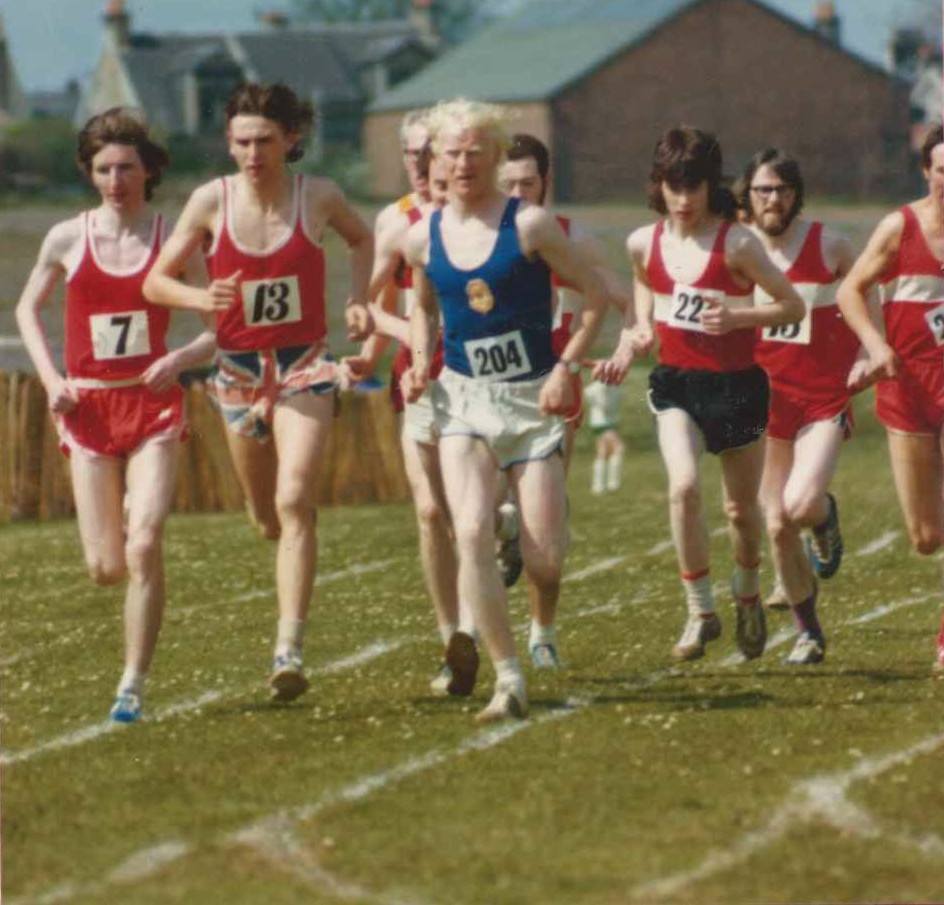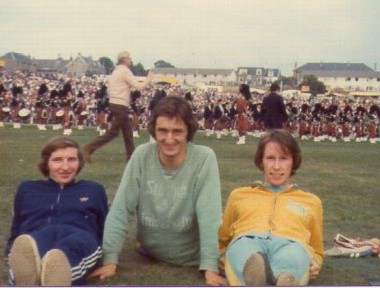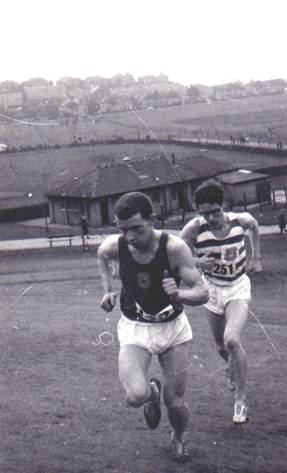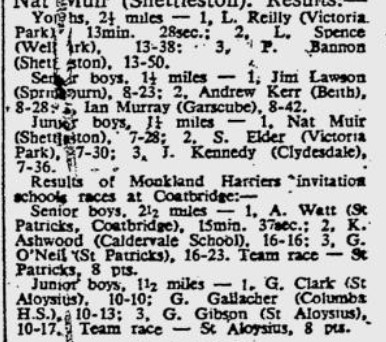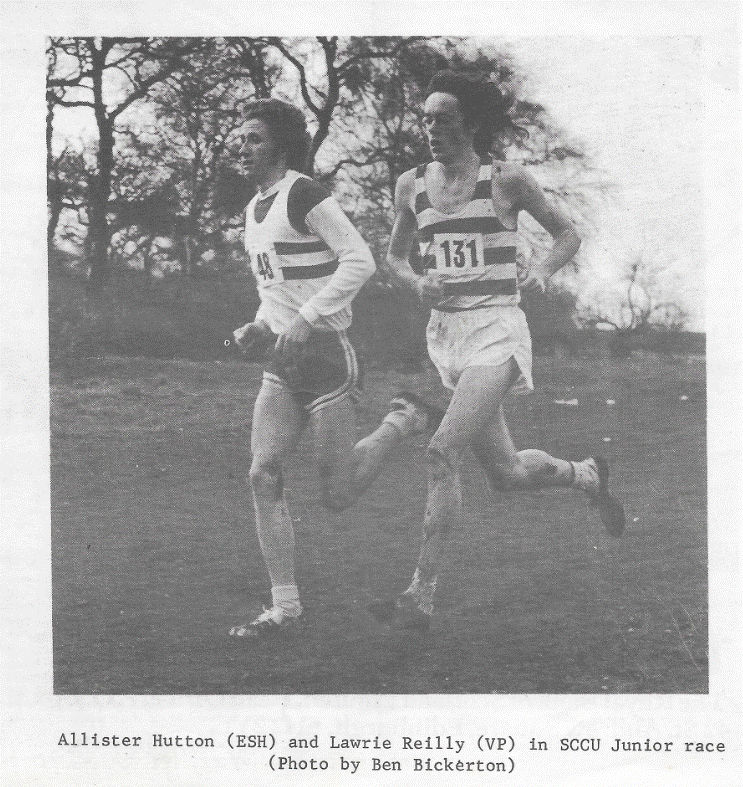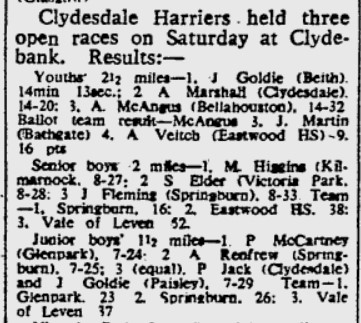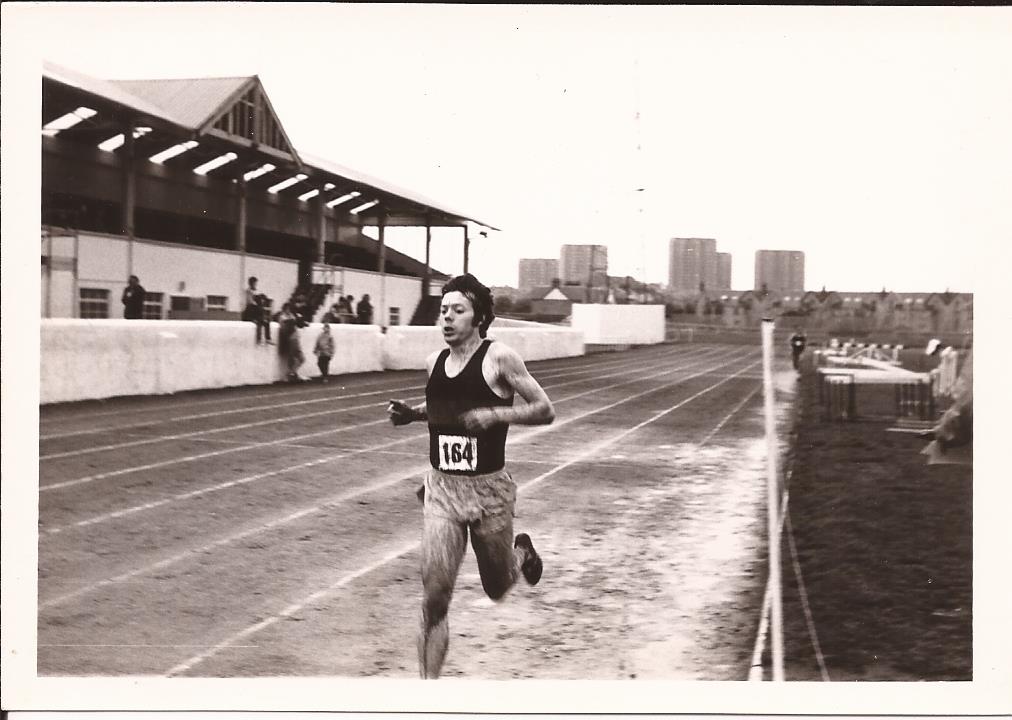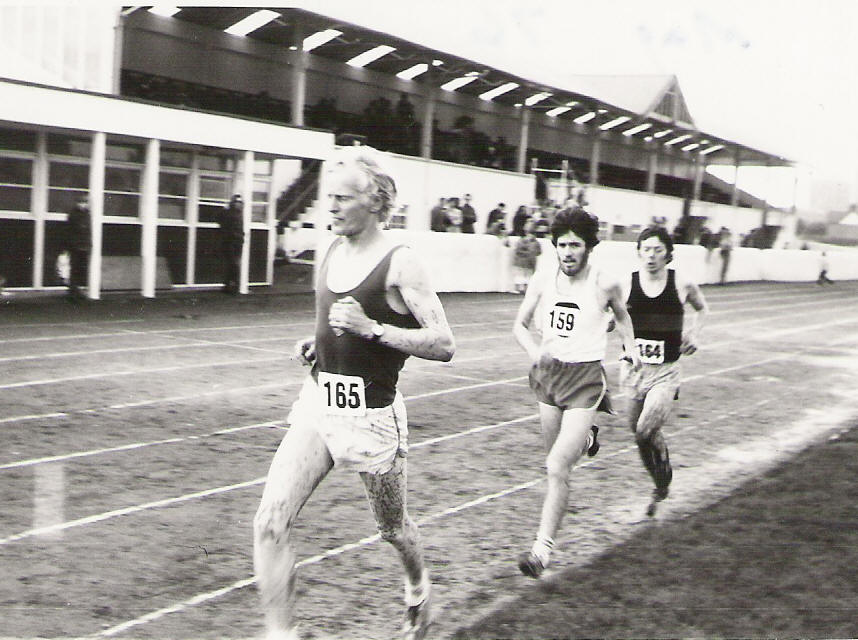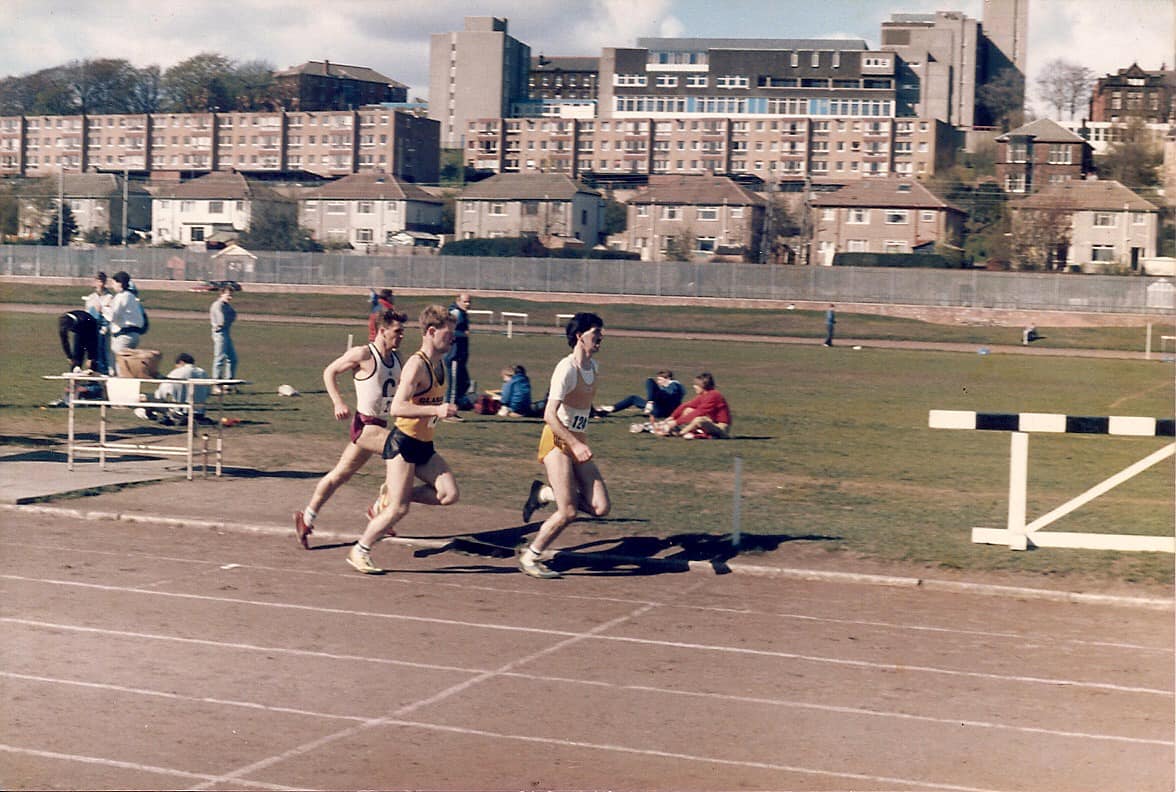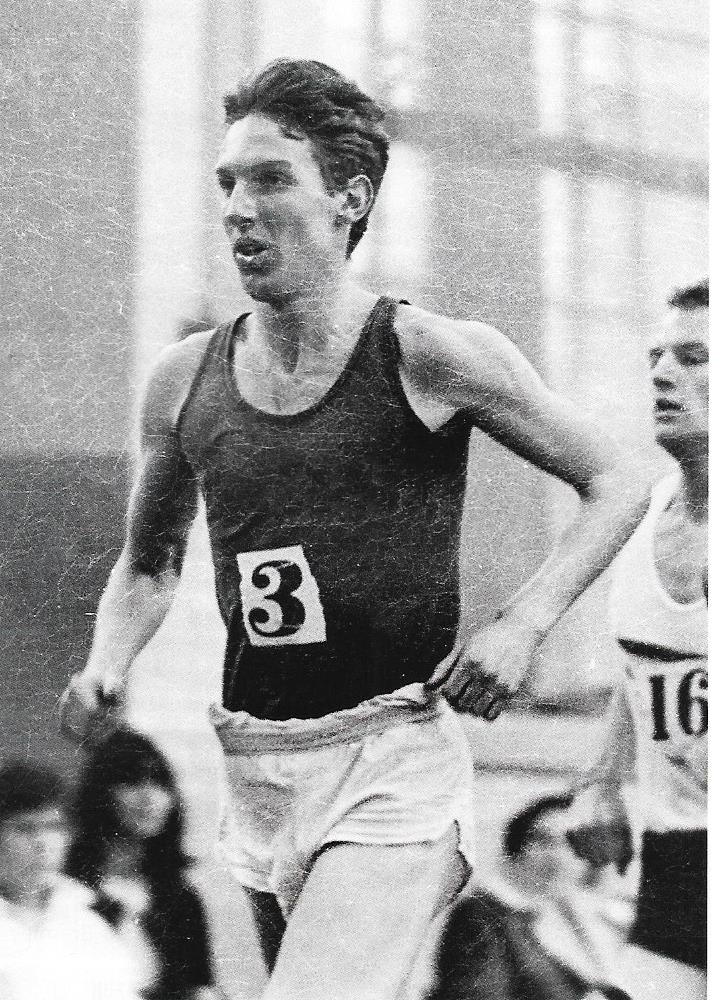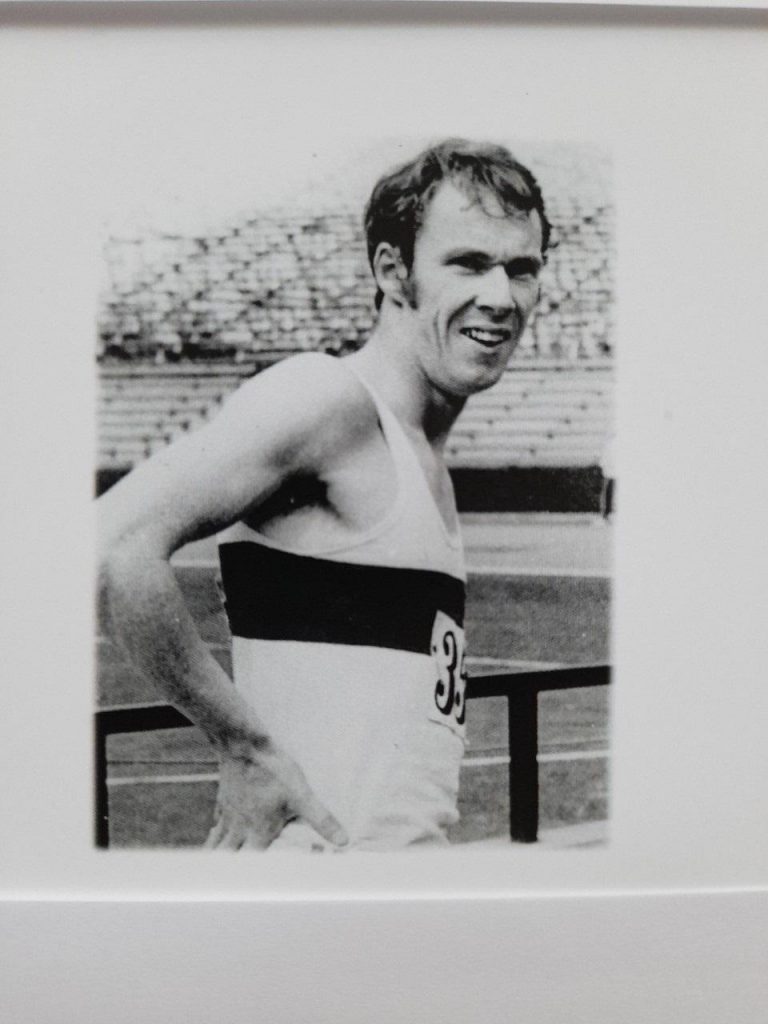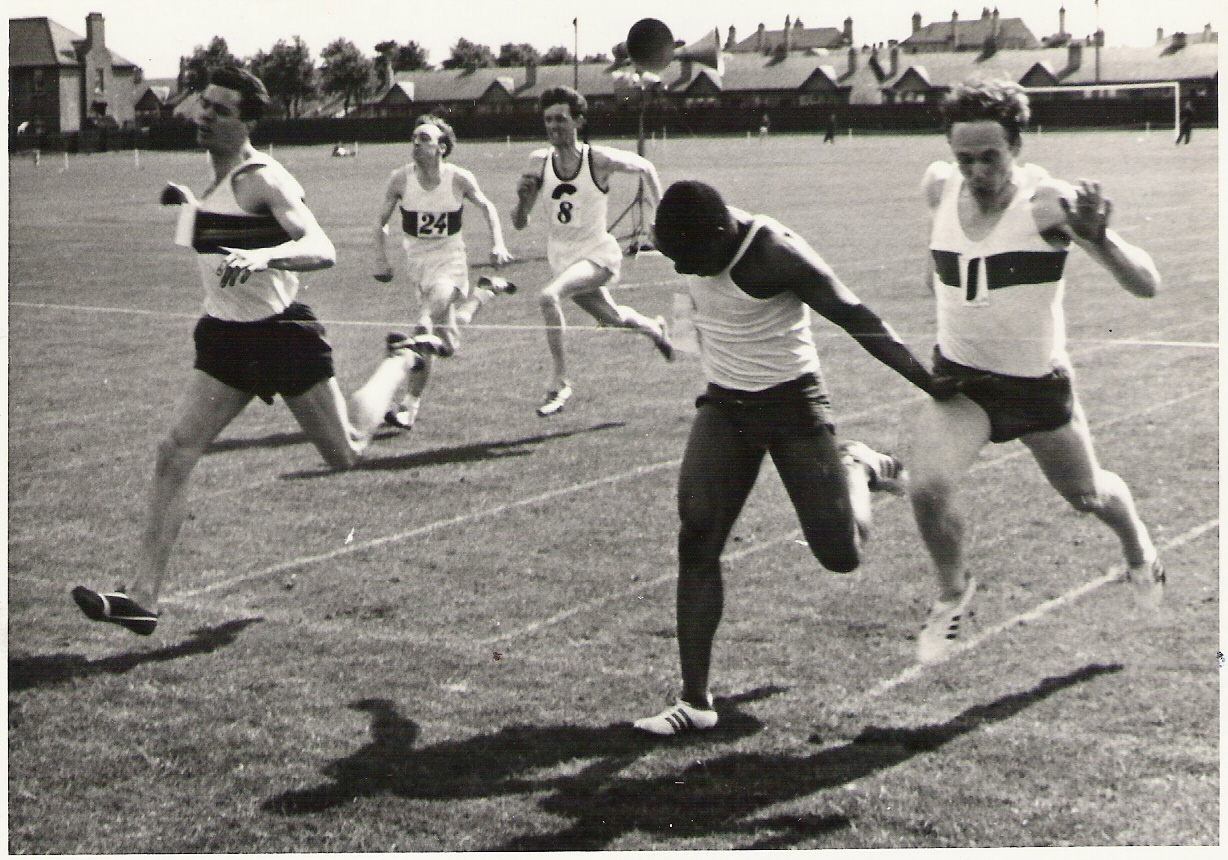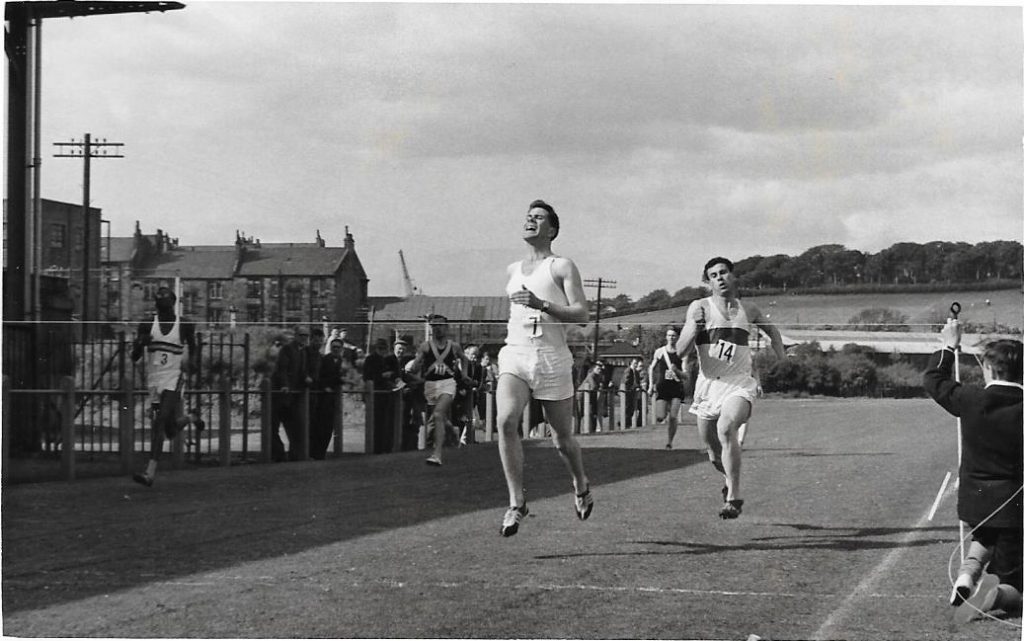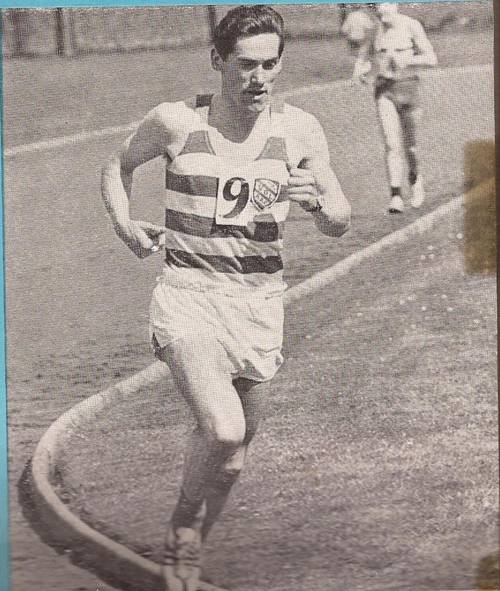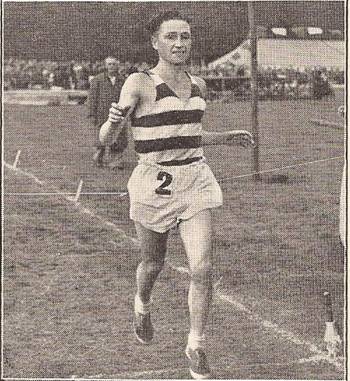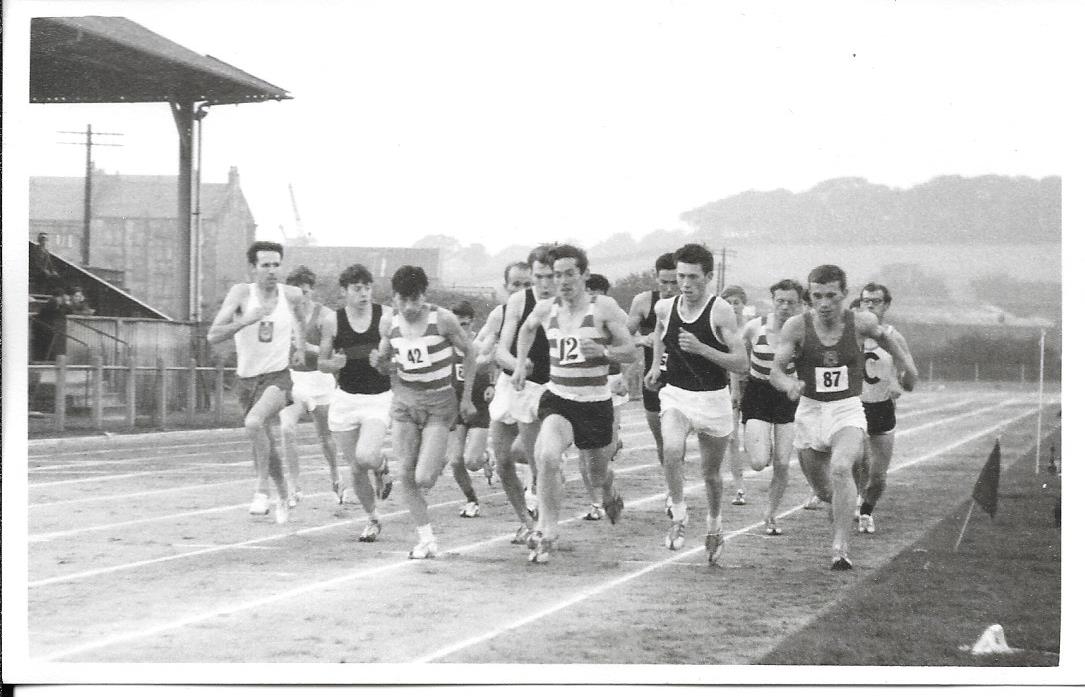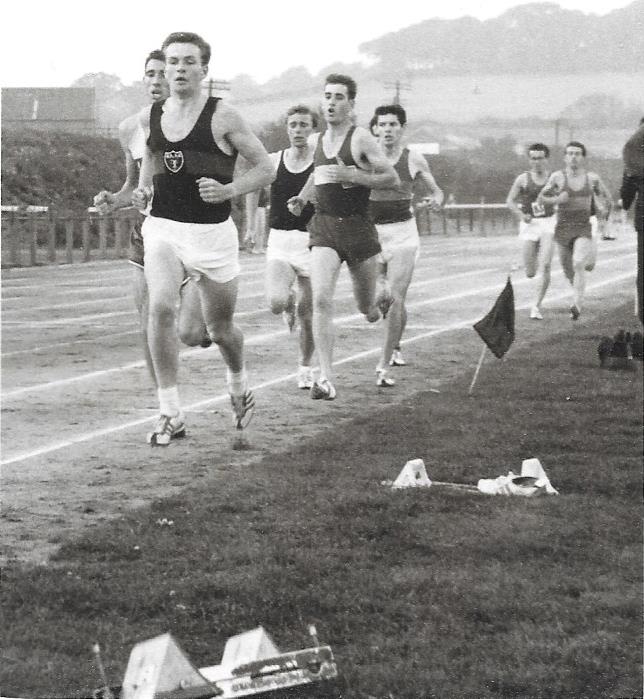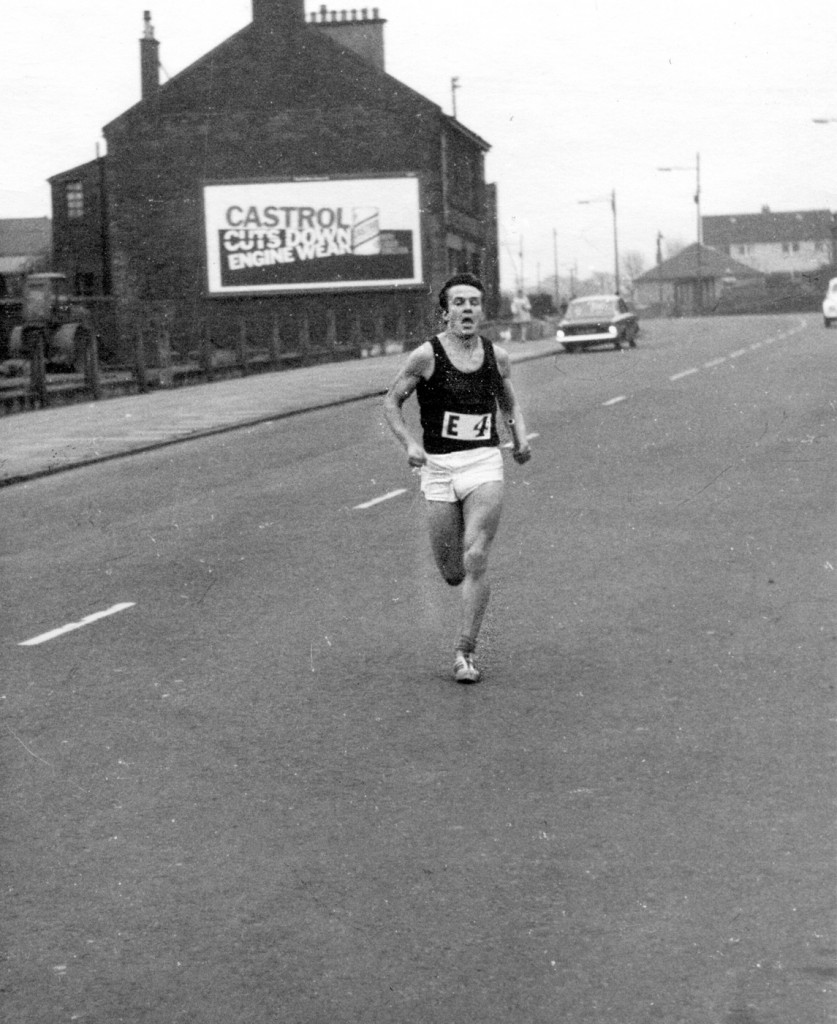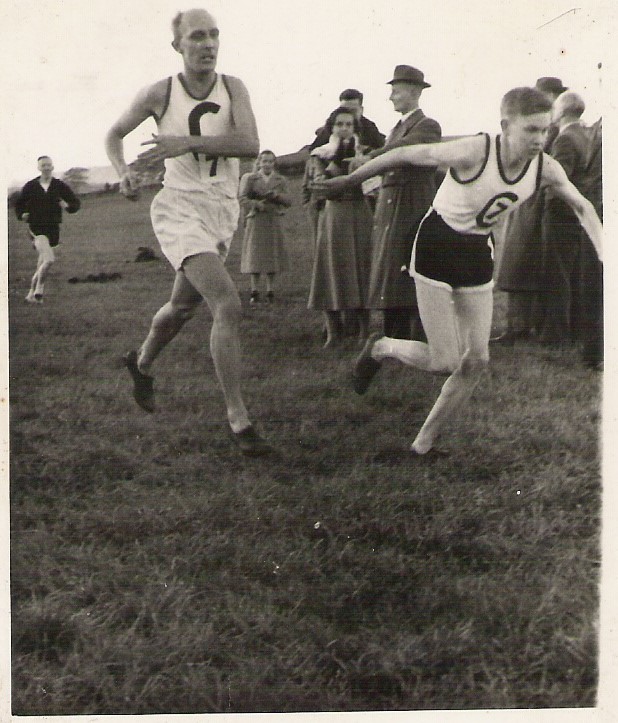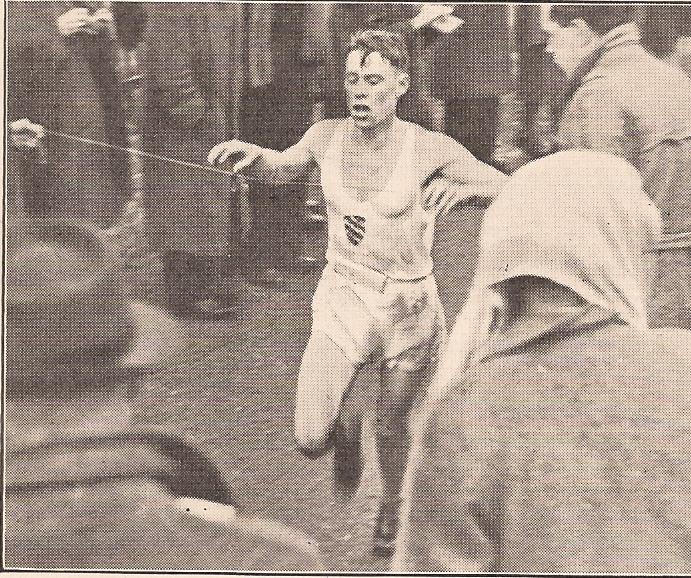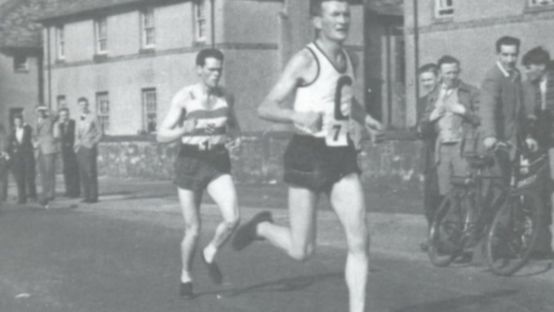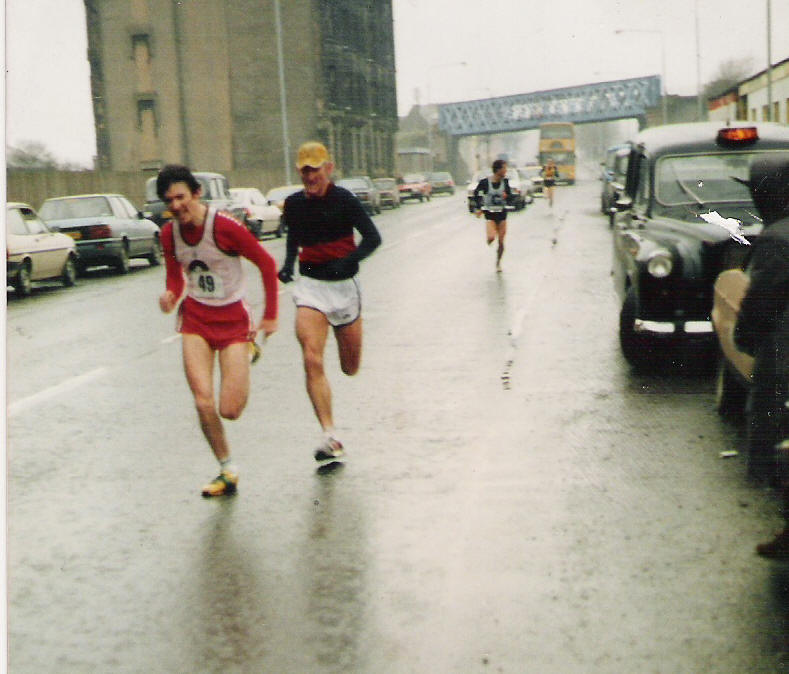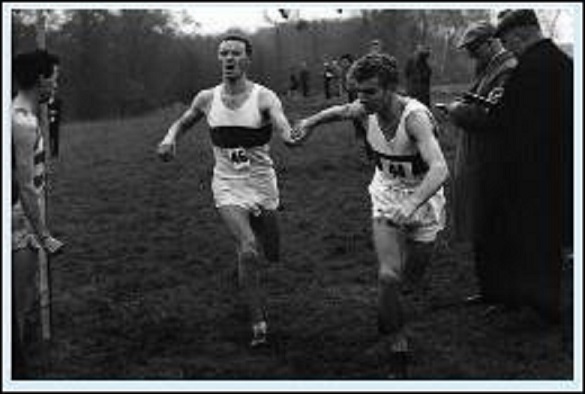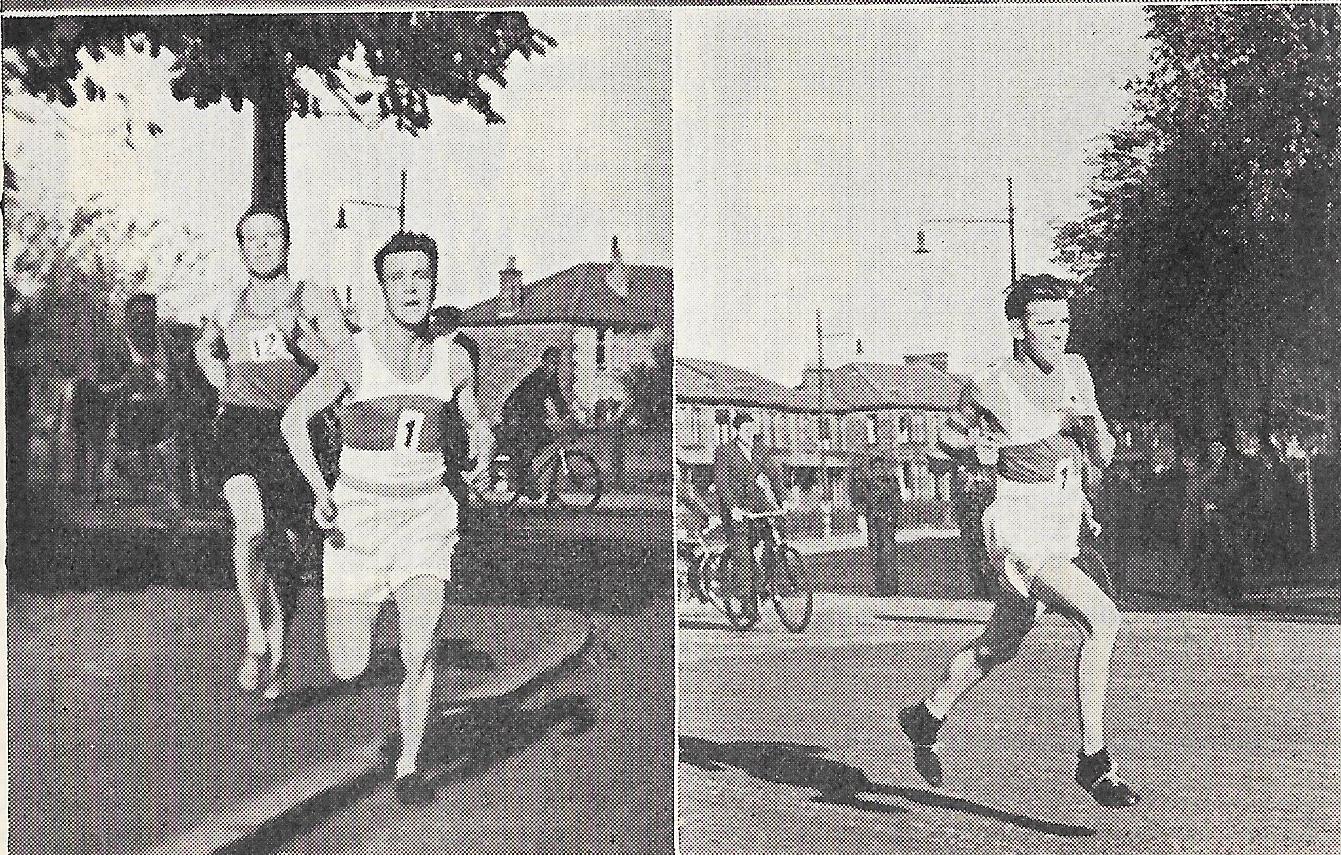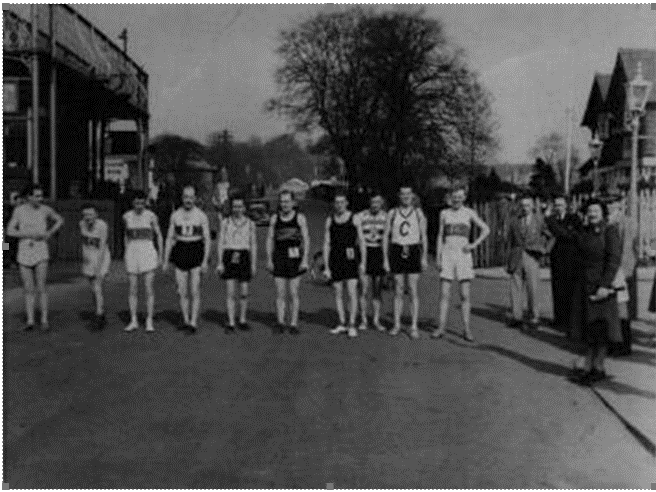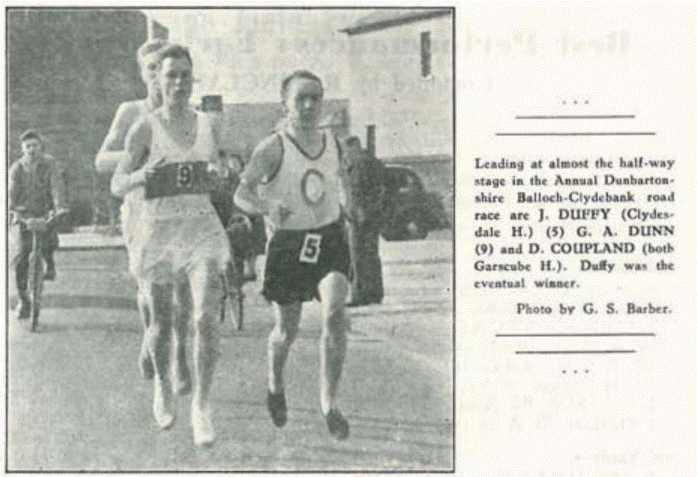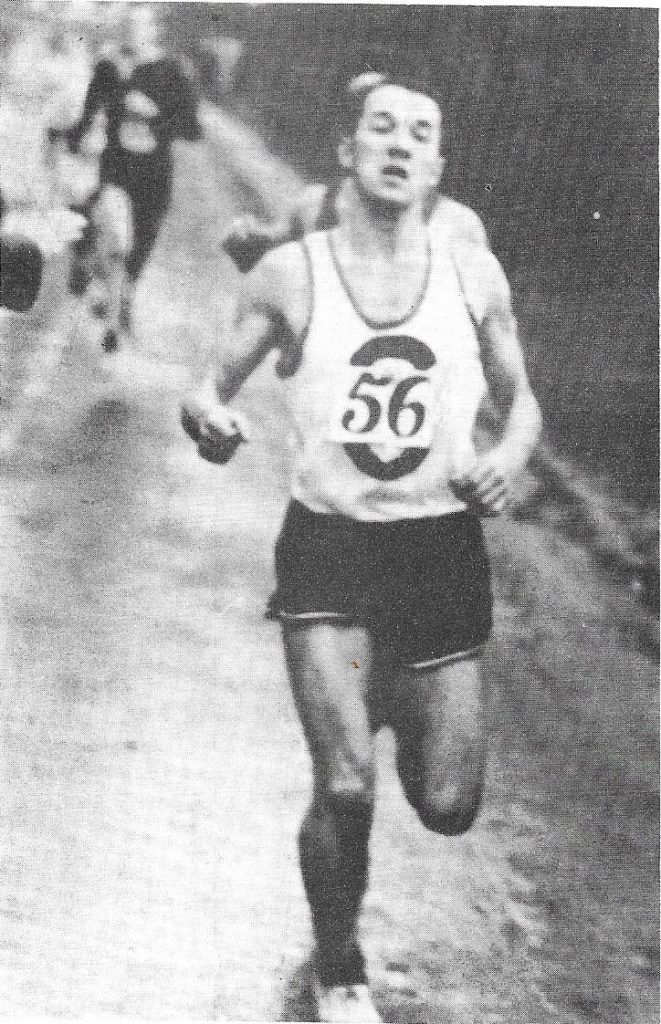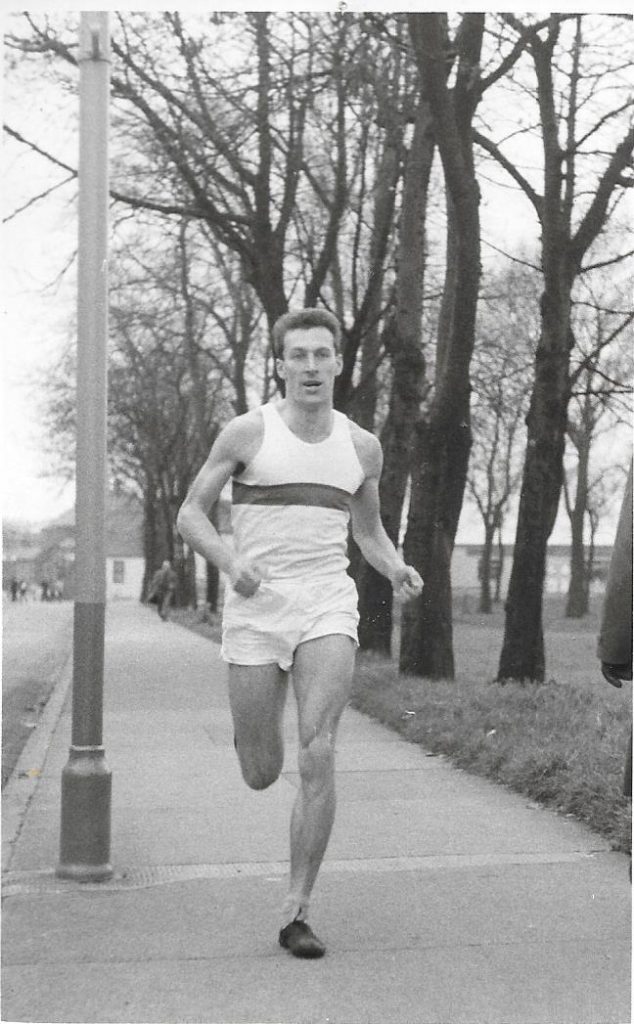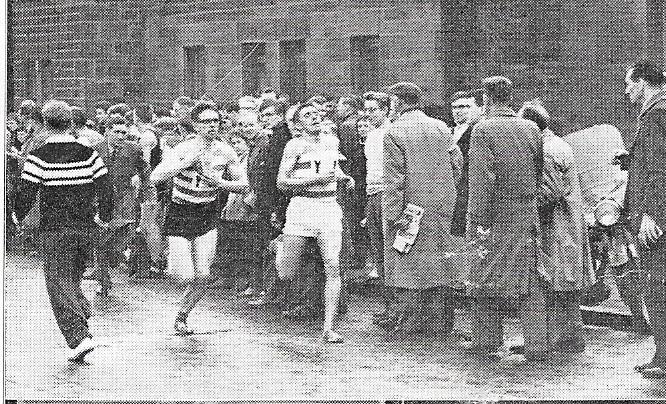Laura Adam (nee Wight) was born on 28/02/1965. She became a fine international athlete on track, cross country and road, competing for Stevenage & North Herts, University of Nebraska and Parkside (Harrow) Athletic Club.
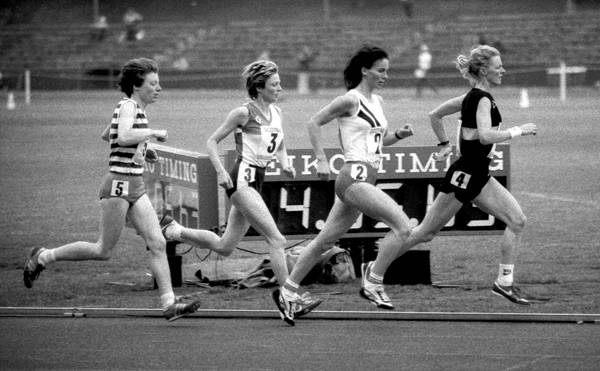
Laura Adam leading Karen MacLeod, Christine Haskett and Sandra Branney. Laura went on to win the Scottish 3000m title from Karen and Sandra.
The Herald newspaper posted an invaluable article about Laura Adam and Vikki McPherson on 19th March 1994. Almost certainly, this was written by expert athletics journalist Doug Gillon.
“NINE months ago, Laura Adam’s promising athletics career seemed over. After having finished runner-up for the AAA of England 10,000 metres title, behind fellow-Scot Vikki McPherson, she suffered a serious liver virus and anaemia.
”It was a bit like hepatitis,” said Adam. ”I felt absolutely drained, and it wiped out my whole summer. I could not train or race at all. I never thought I would get through it, and came close to packing the sport in.”
But she battled back from what was her second career-threatening illness with the same determination she had displayed in conquering the first. Before she made her UK senior debut in 1988, it had taken a year to diagnose a folic acid deficiency, which meant her blood was carrying insufficient oxygen and she was constantly exhausted. But, a week today, Adam will line up alongside McPherson, the only two Scots in Britain’s team for the World Cross-Country Championships in Budapest. Not one Scottish male has made the party.
Both women hope it will be a stepping stone to a Scottish vest at the Commonwealth Games later this year, while Adam, a long-serving internationalist — but mostly on the periphery — hopes that it will consolidate her return from illness and herald the beginning of a more established role in the sport.
A skelf-thin 5ft 4in., Adam’s fragile physique belies an iron will. She has represented Scotland several times, but her first representative vest was in England’s colours, in cross-country, aged 16. Her only Scottish track title to date was at Crownpoint, in 1989, when she won the 3000m — the distance which she hopes to run in the Victoria Games this year. Adam, formerly Laura Wight, won a UK junior vest at 800m — her only British track international — although in a four-year US collegiate career, at the University of Nebraska, she captained both the track and cross-country teams, and won bronze in the NCAA 3000m.
”Both my folks are from Edinburgh, which is where I was born,” said the 29-year-old graduate. ”But we moved south when I was four. All the family loyalties are to Scotland. That’s why I switched, after my first international, when I realised that it was possible to do so.”
Adam’s first senior British appearance was at the 1988 World Cross-Country Championships in New Zealand, when she was called on at 24 hours notice to replace Zola Budd after the South African finally fled back to the country of her birth. She has been to the world event five times in the past seven years, one of these absences being to give birth to her daughter, Nicole, now aged three. A year ago, she travelled as reserve to Amorebieta in Spain, but did not compete, while in 1992, in Boston, though a reserve, she did run.
”It’s nice to be in the team on merit this time,” she said. ”Especially as I thought, after last year, that I might not run again. Nicole could do with a sibling. That was a temptation as well, but things are on hold now that I’m running well.”
This winter Adam has enjoyed perhaps the best season of her career. She was third in the English women’s national championships last weekend, helping her club, Parkside, win the team title, and she finished second in the world trial behind Paula Radcliffe. There was a fourth place in the European Clubs championships, and top-10 finishes at World Cross races in Seville, Brussels, and Belfast.
Adam lives in Zurich, commuting around the circuit. ”Last year I spent three months at my folks’ home, in Stevenage. They helped look after Nicole, but it was hopeless for family life. This winter I have stayed at home. It is more expensive, and training is much harder, but at least I see my husband, Marc. ”There are no endurance runners at the local club, and all the others train indoors, which means I have to do all my work outside, alone. ”It is very cold, rainy, and windy. There isn’t much snow, oddly enough. In fact, winter is not too unlike Scotland. ”I find it very difficult to fit in training. I’m a teacher, but don’t work. People say it should be easy for me. But Nicole is really demanding, and I have to wait till Marc comes home from work, so that I can train.”
Next weekend will be Vikki McPherson’s third successive appearance in Britain’s world team. A former World Student Games silver medallist, she helped the UK win team gold, and could repeat that this year. She made her Great Britain track debut in the World championships at 10,000m in Stuttgart last year, having placed fourth in the World Student Games track 10,000m, and has just been voted women’s team captain of the Walter Scott Commonwealth preparation squad which meets this weekend at Inverclyde. Adam’s track performances do not yet merit inclusion in the squad. McPherson, an accountant, will pick the brains of Adam, an accountant’s wife, when they are team-mates next weekend. But the Swiss housewife’s briefing may add up to bad news for City of
Glasgow’s double Scottish cross-country champion. Adam’s husband ran the steeplechase for Canada at the World championships in Helsinki 11 years ago. Now, he is a high-flying accountant, but balancing athletics and a career put his racing into the red. ”He could not keep both up,” said Adam. ”Work was too demanding.”
McPherson’s employers, Arthur Andersen, have eased off on her workload. ”No overtime at the moment, for which I am really grateful,” she said.
Two nights before the trial she worked until 11pm — and snatched last place in the team by just one second. But most of McPherson’s international appearances have improved a couple of places on last winter, and she is lying eighth in the WorldCross rankings — the world-wide grand prix for the sport.
Both have set a top-30 finish as the realistic objective in Budapest. But within the next few days, the pair should also be named in the UK’s six-strong team for the World Ekiden road relay championships, in Athens on April 17.”
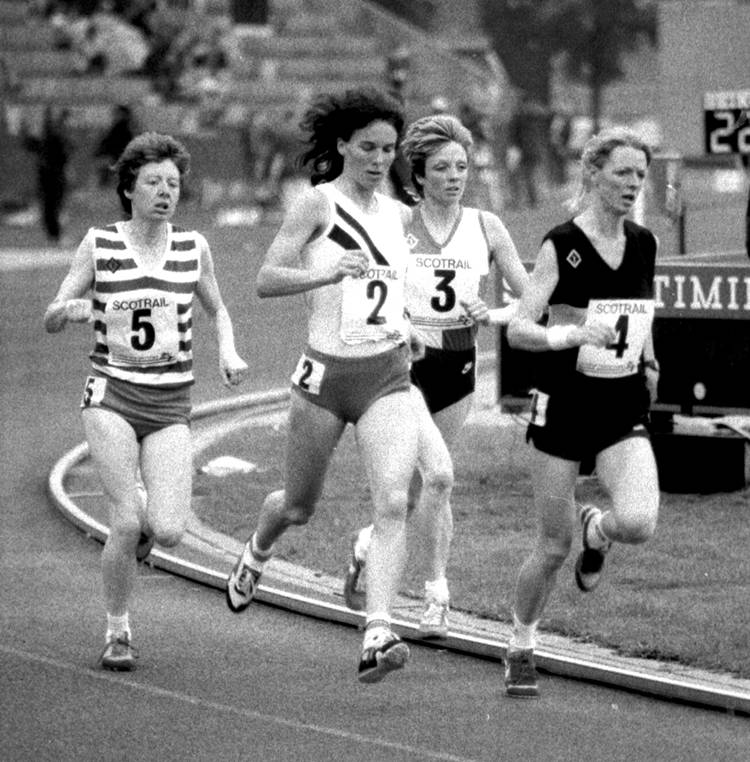
Doug’s really excellent article deserves several follow-up comments.
*Laura Wight’s first appearance in the Scotstats archive is in 1983, when her 800m time was 2.07.8, (ranked 7th in Scotland). She was also listed each year for 1500m, 3000m (and, in 1986, 5000m).
*Laura Adam was married in 1988. That year she improved her 800m personal best to 2.11.7; and in 1989 set a “best ever” mark at 1500m (4.17.66). Her 1990 5000m “lifetime best” was 16.05.6 (first in the Scottish rankings). Two more fastest ever times were: 3000m (9.02.47 at Hengelo, Netherlands) which was second in the 1994 Scottish rankings; and 10,000m (34.00.12) second in 1993.
*Laura Adam actually raced for Great Britain four times in the Senior Women’s World Cross Country Championships: 1988 Auckland, New Zealand; 1990 Aix Les Bains, France (when she was 47th and second Briton); 1992 Boston, USA; and 1994 Budapest, Hungary (where she finished 45th and first Briton). As was mentioned in the article, she was a non-running reserve in 1993.
*Track championships: as well as the 1989 3000m title, in 1994 she won the Scottish 1500m title. GB championship medals: third in the UK 3000m in 1989 and 1992; second in the AAA 10,000m 1993.
*English Women’s Cross-Country Championships: Laura helped Parkside (Harrow) Athletic Club to win the team title in 1989 at Jarrow (when she was third individual); 1990 at Rickmansworth (2nd individual); 1992 at Cheltenham (5th); 1993 at Luton (7th); and 1994 at Blackburn (when she secured an individual bronze medal behind Paula Radcliffe). Superb consistency.
*Other British vests: 1989 World University Games in Duisberg, Germany (when she finished 8th in the 3000m); 1992 Yokohama, Japan, International Women’s Ekiden Relay; 1992 Funchai, Portugal World Road Relay Championships.
*Two Scottish Athletics appearances: 1989 versus Northern Ireland and Ireland (2nd in 1500m); 1994 Commonwealth Games at Victoria, Canada (8th in 3000m).
*Seven Scottish Cross Country international appearances between 1983 and 1994: Dublin 1983; Cardiff 1988; Margate 1989; World Cross Trials, Glasgow, 1990 (4th and first Scot); Basingstoke UK Championships 1992 (5th); Mallusk 1994 (7th and first Scot); British Championships, Alnwick, 1994 (2nd, first Scot).
*While in Europe, Laura Adam raced all over Britain, plus New Zealand, Germany, France, Japan, USA, Switzerland, Portugal, Belgium, Spain, Hungary, Netherlands and Canada. She seems to have retired from international competition in December 1994. Shortly afterwards, she moved to St Louis, USA and, until leaving the sport aged 35 in May 2000, raced on the road in so many different American states, usually over 5k to 10k, placing well, winning five times and earning over ten thousand dollars in prize money during her career.
Laura Adam, an extremely good Scottish athlete, should look back on her athletic adventures, a record that most top Scottish men would covet, with justified pride.
